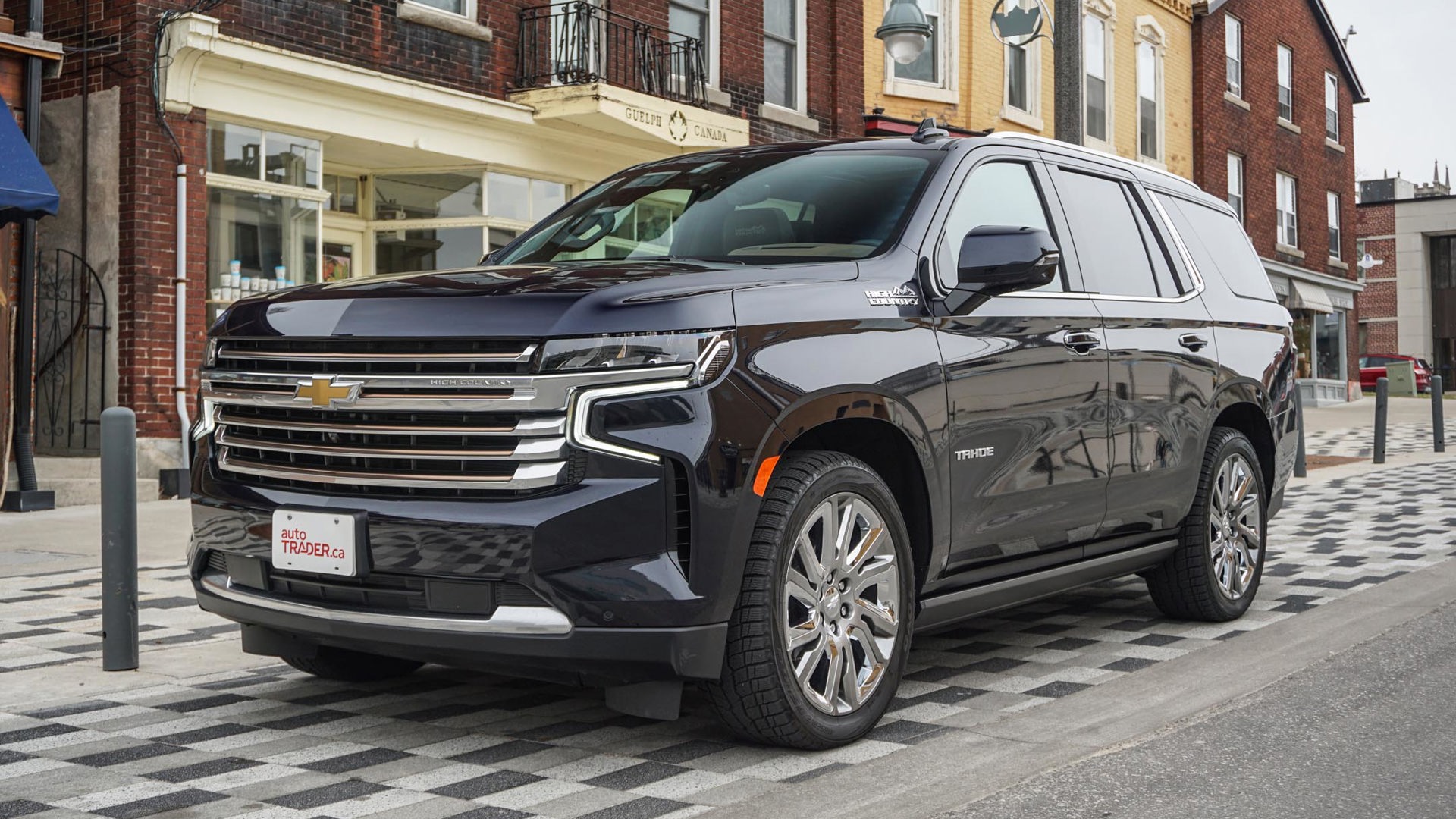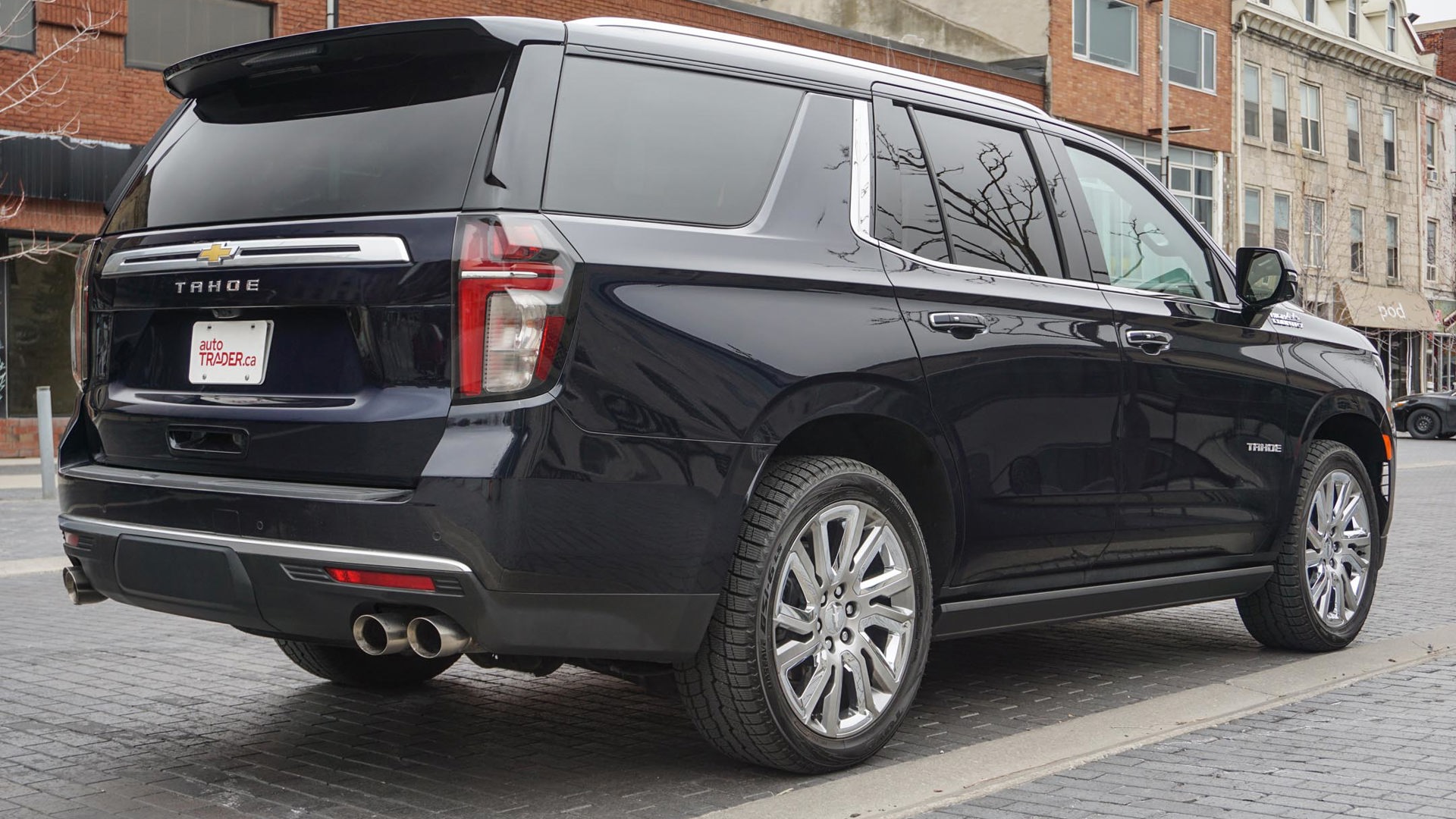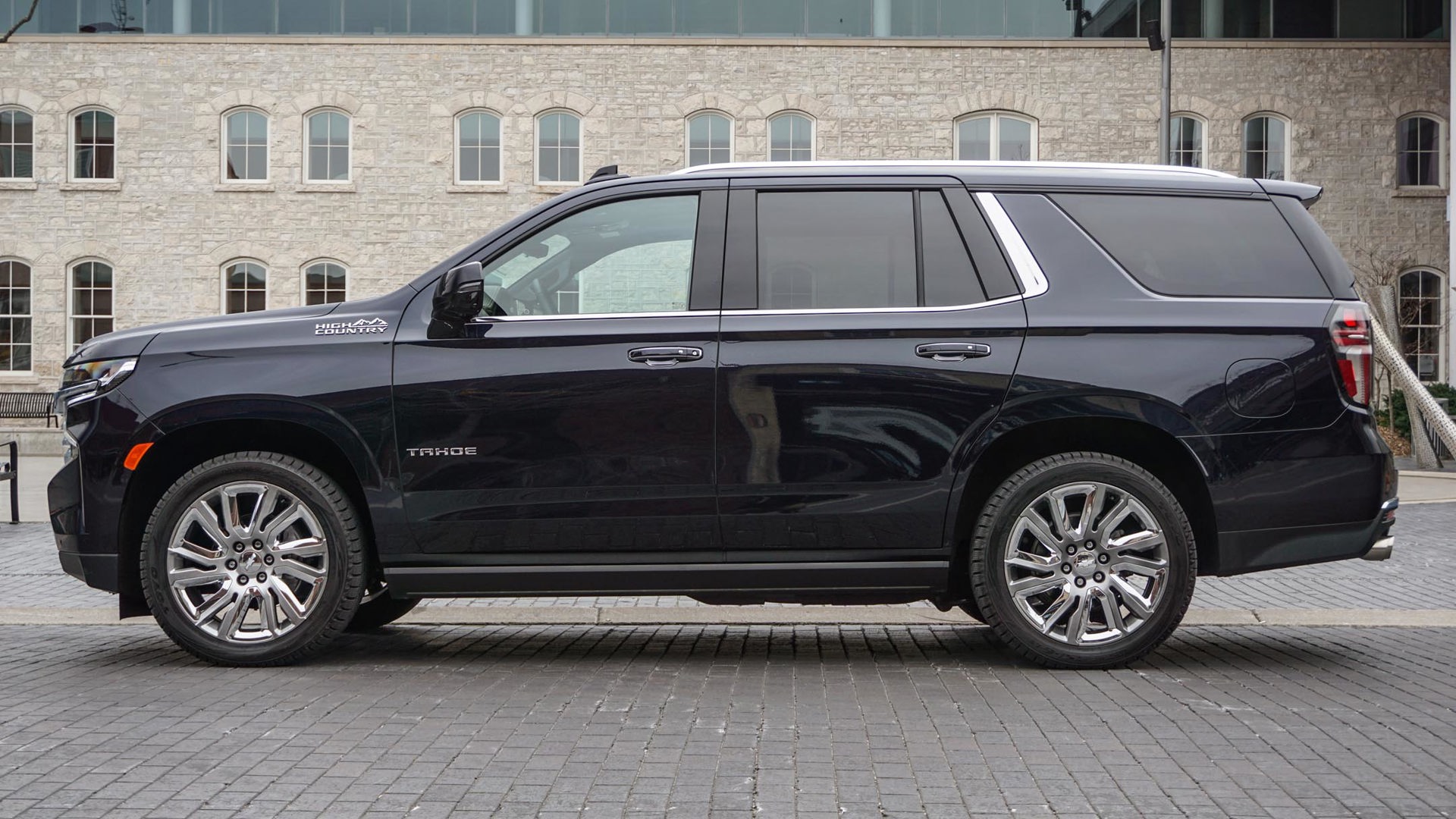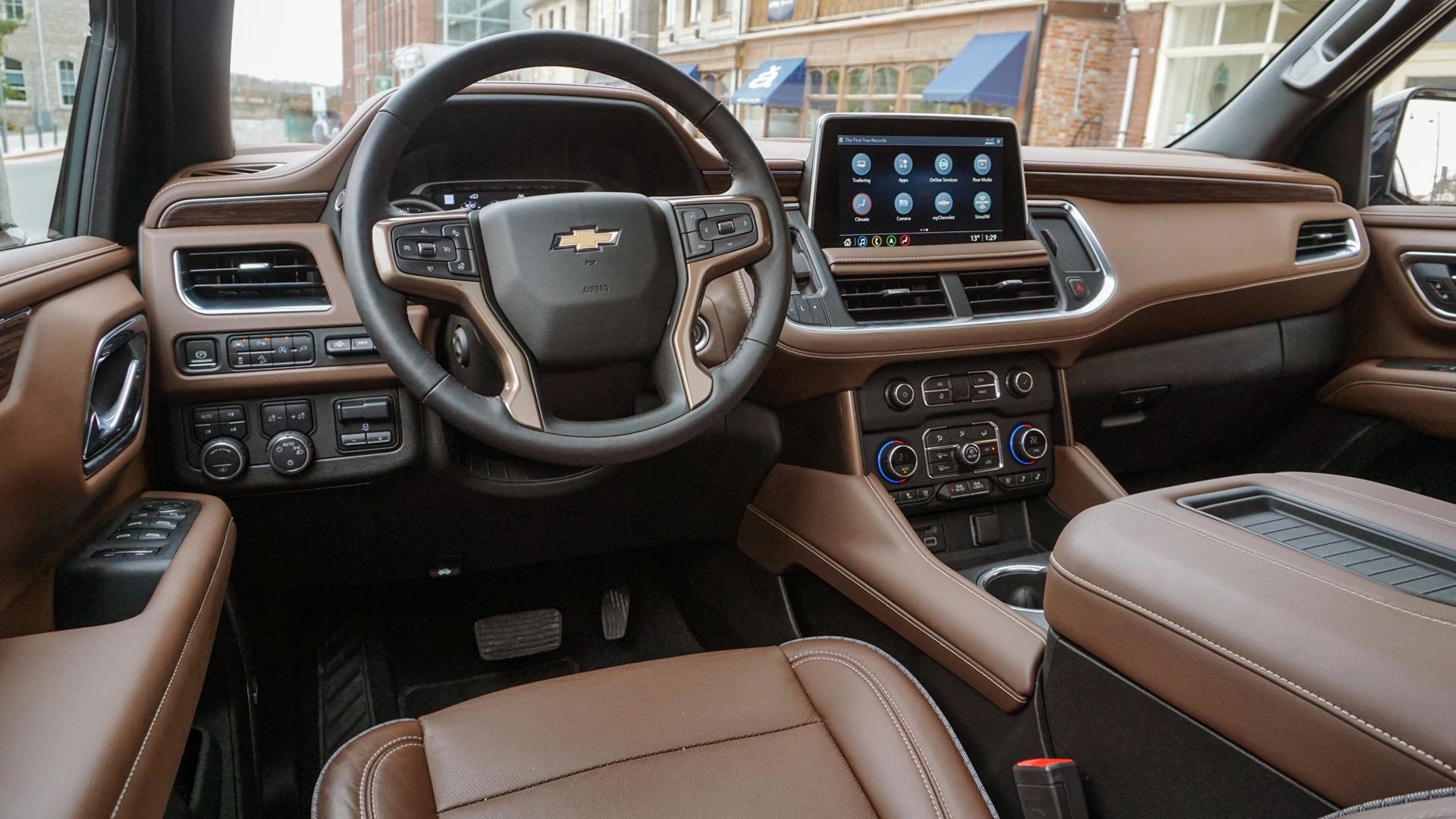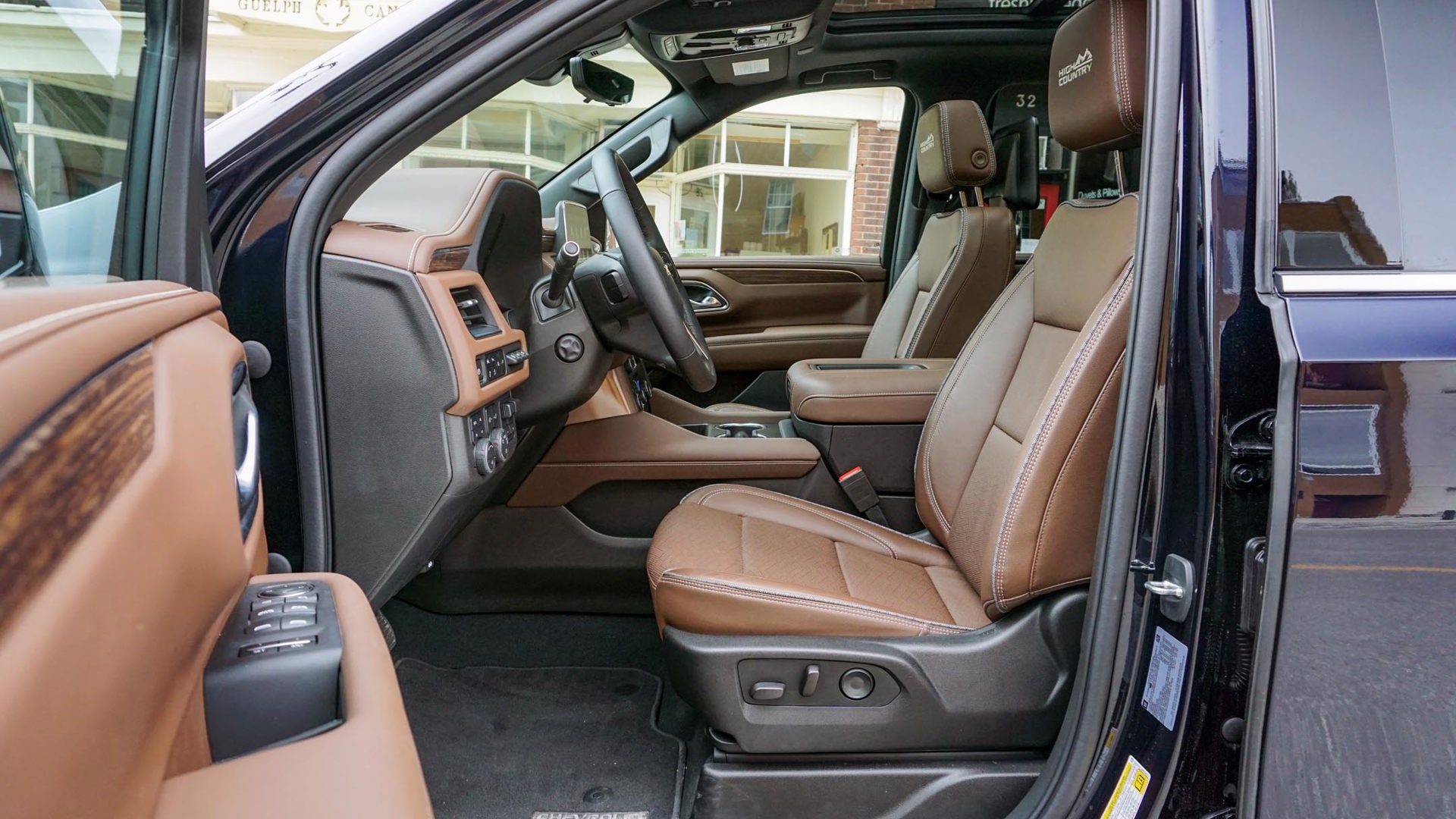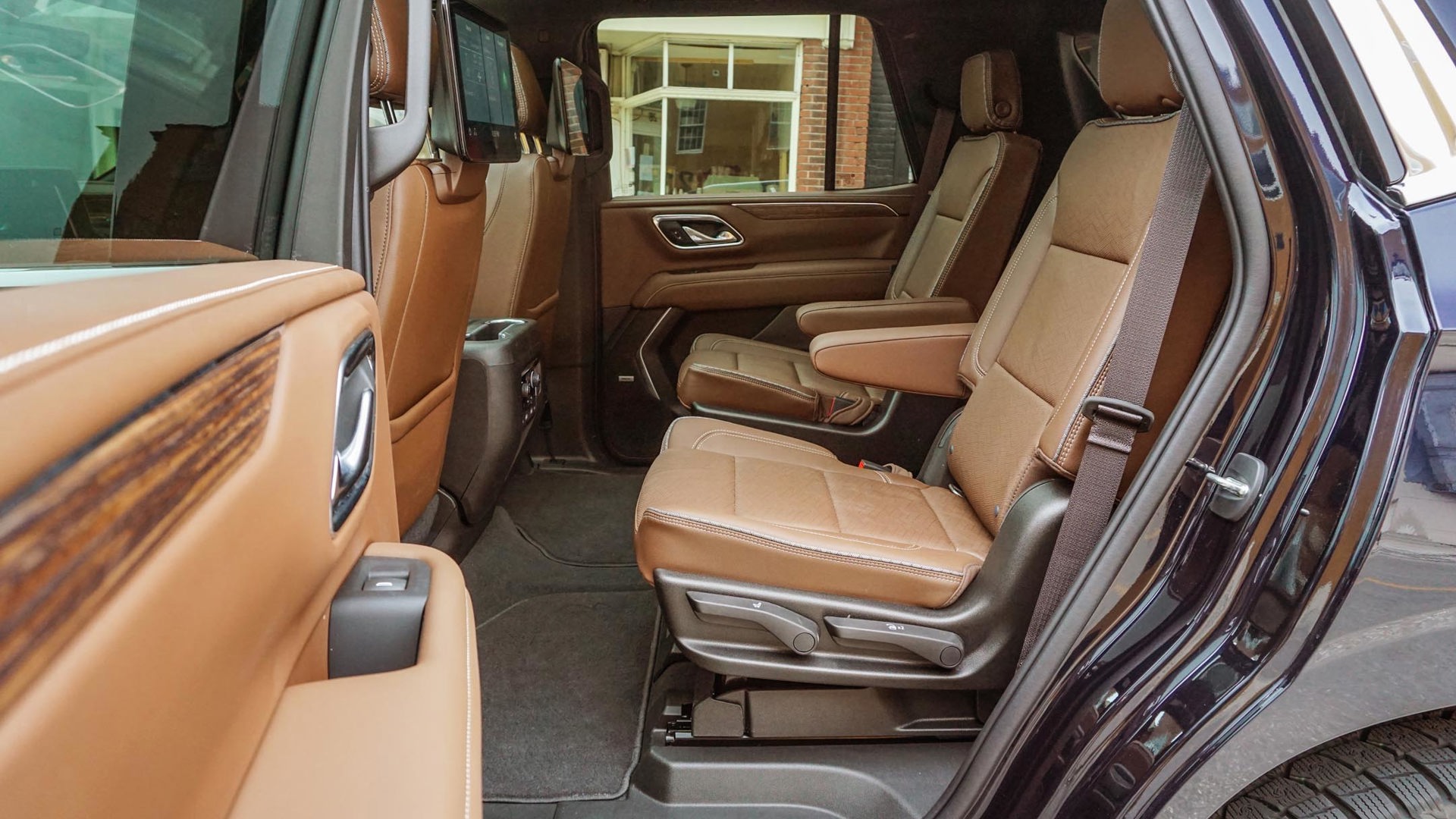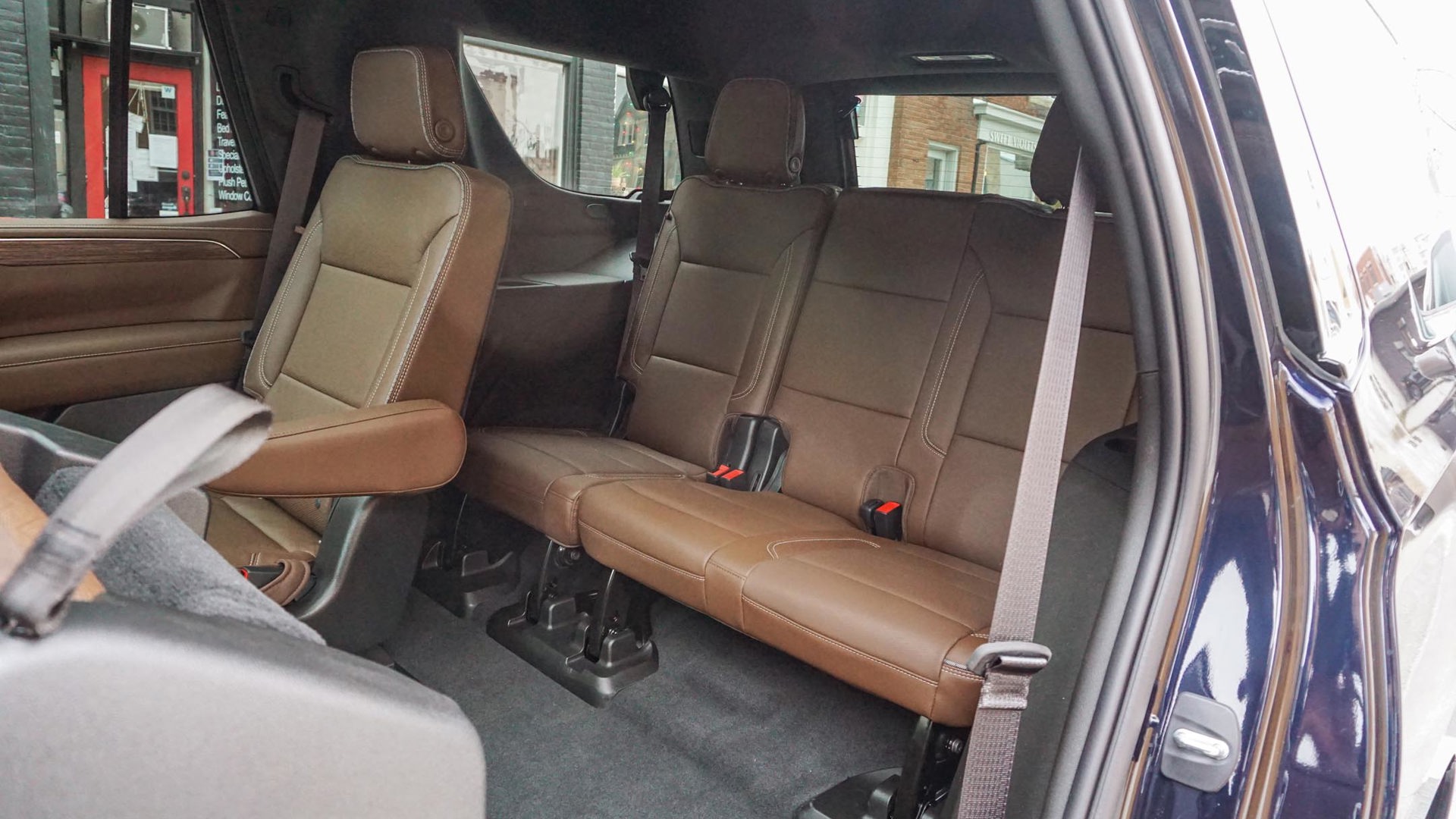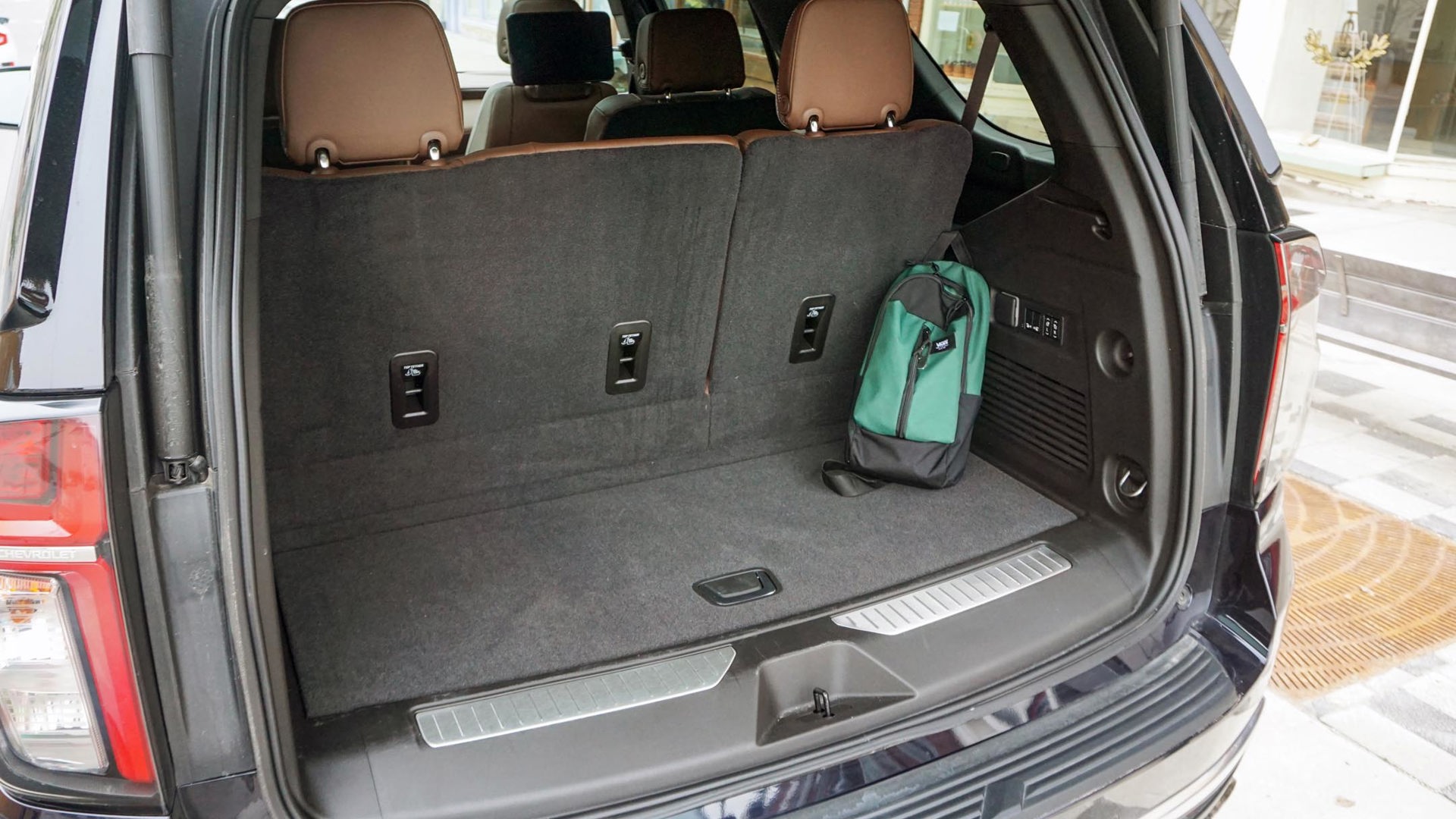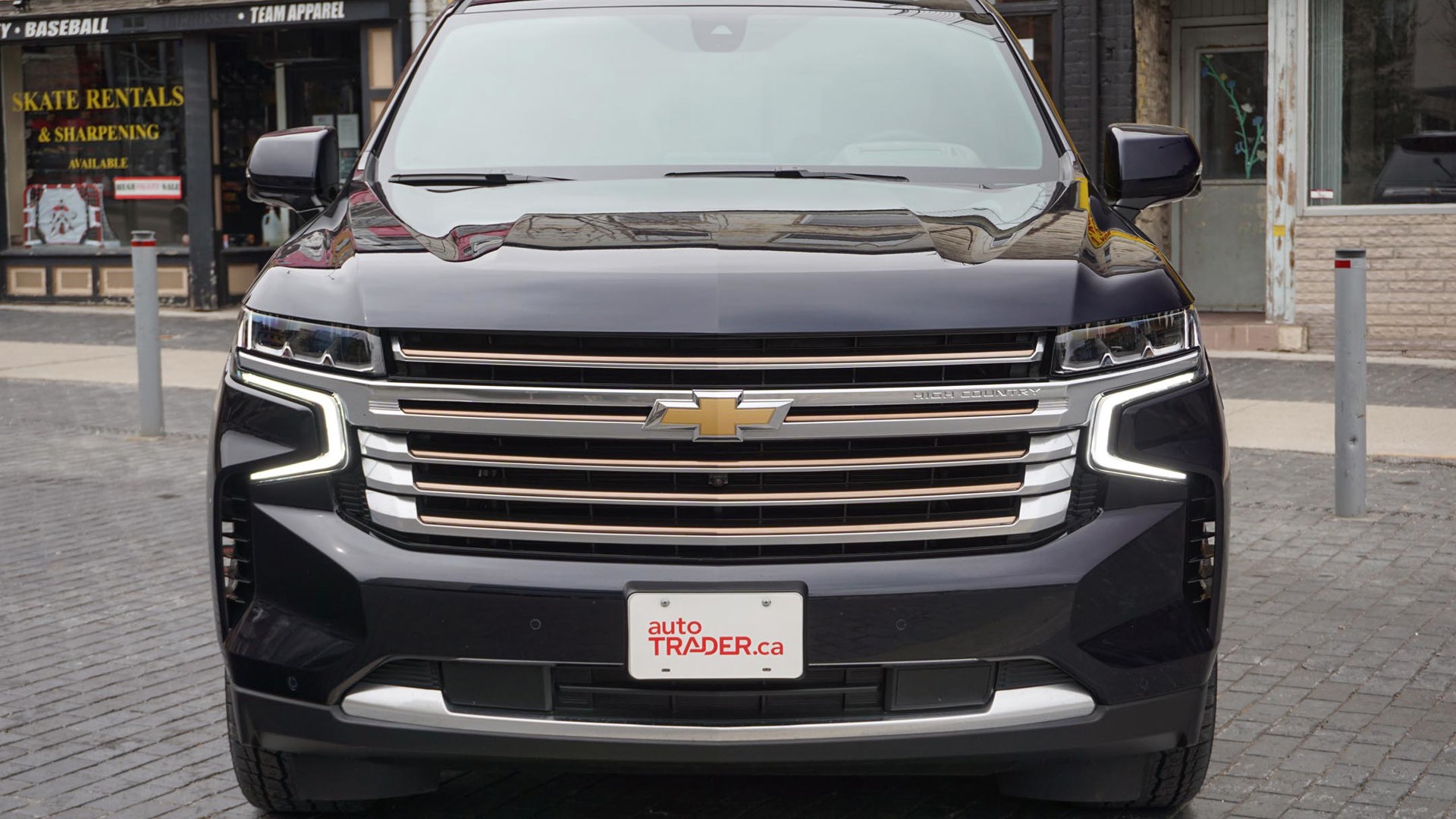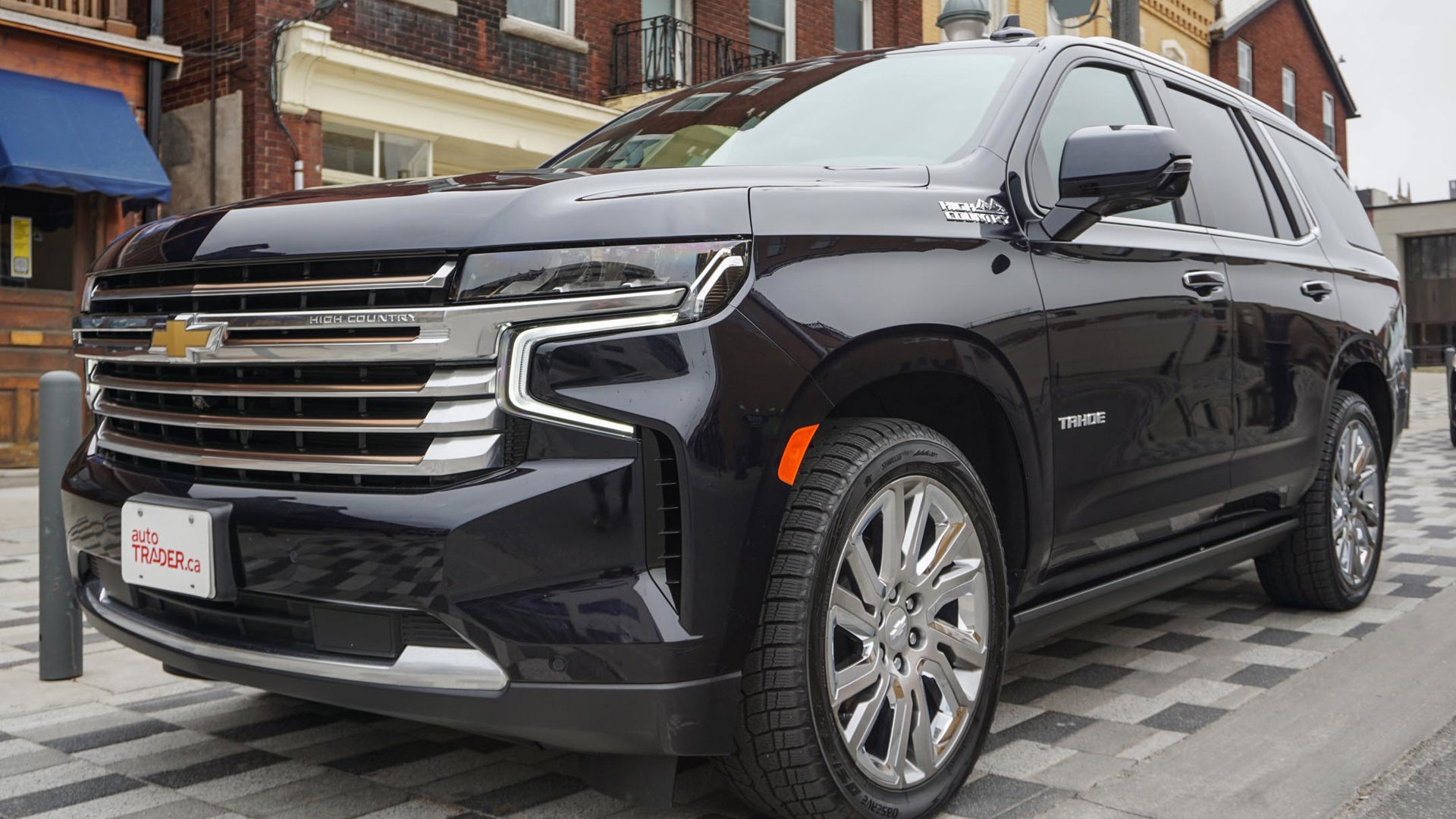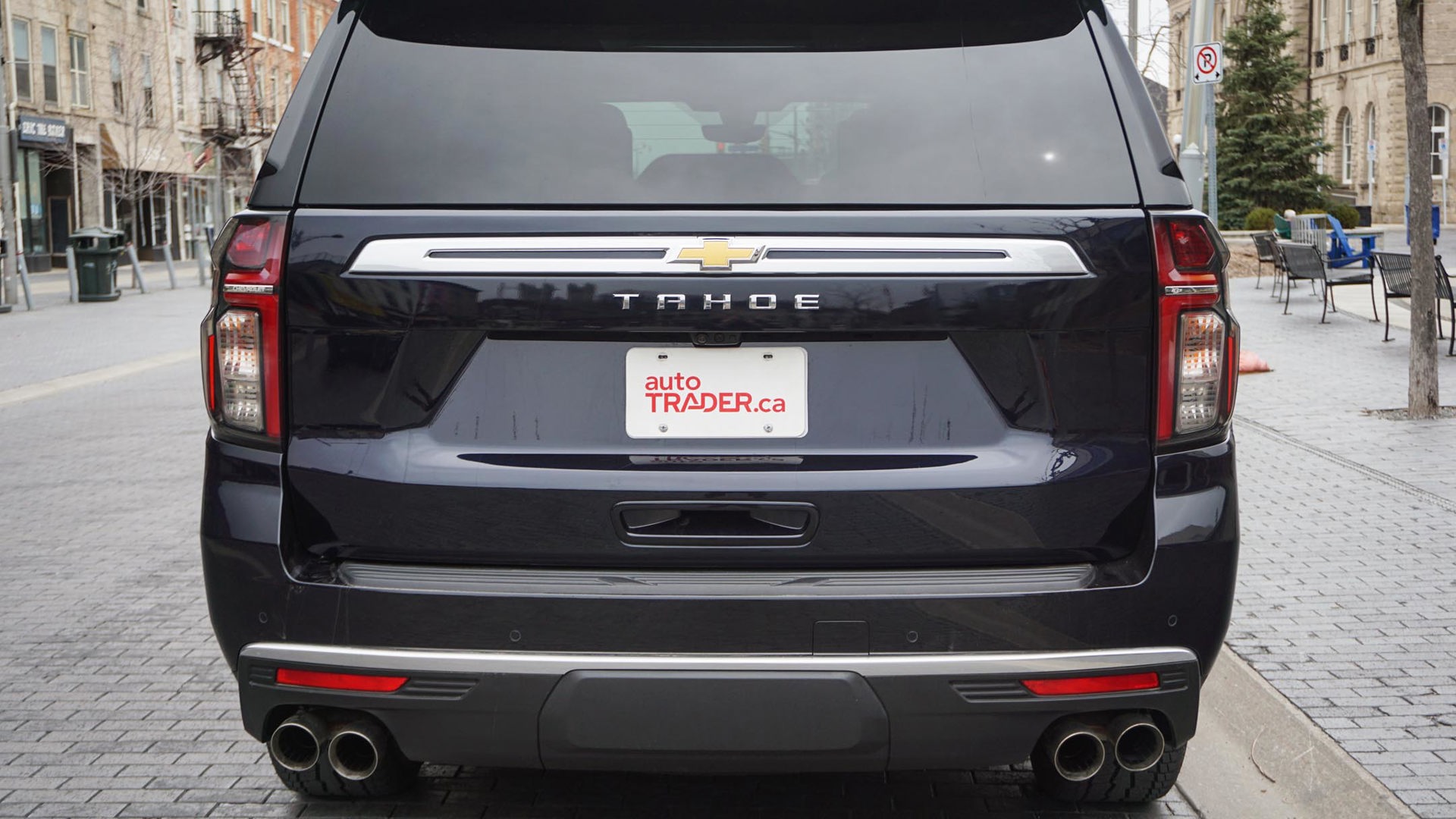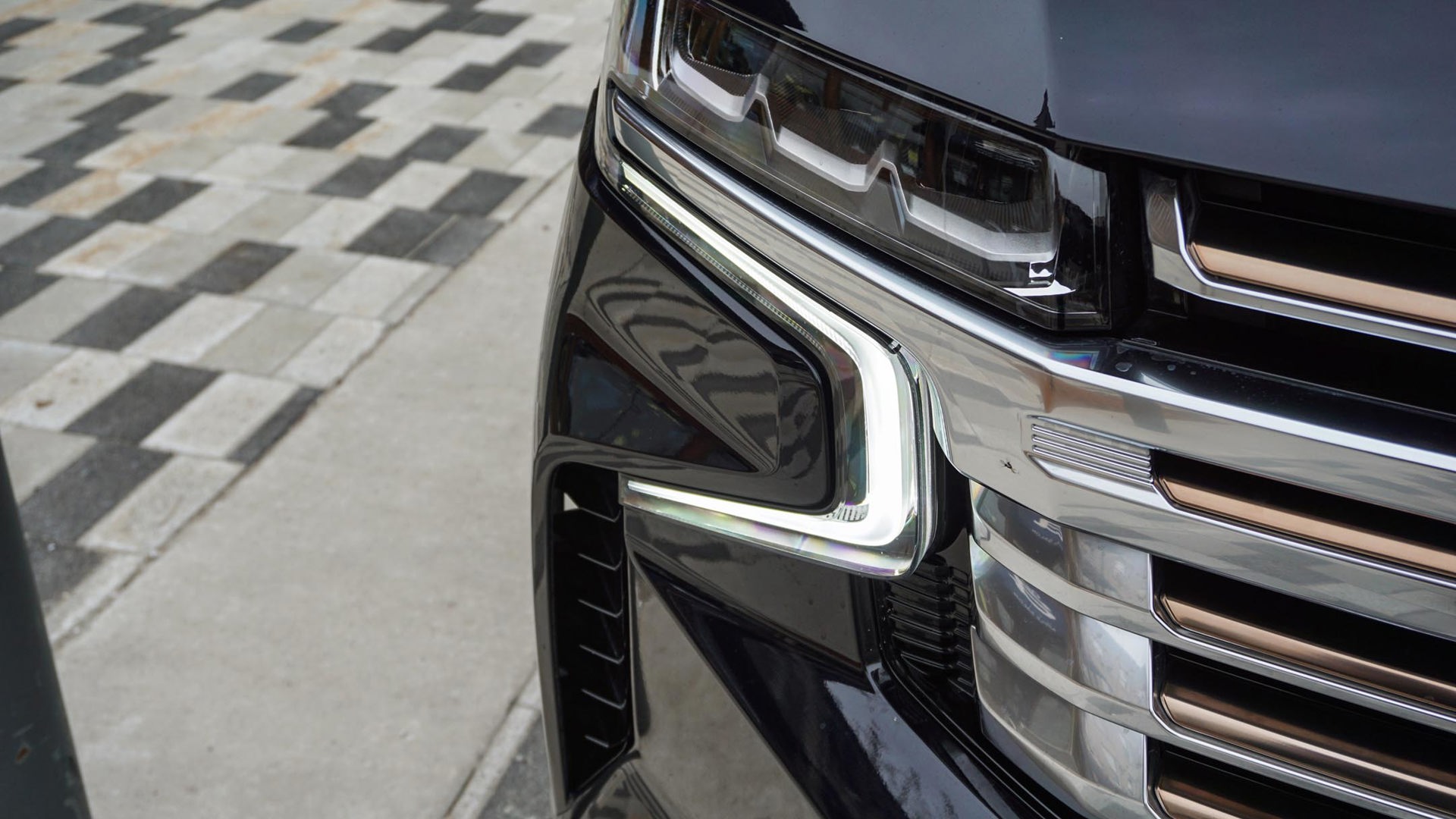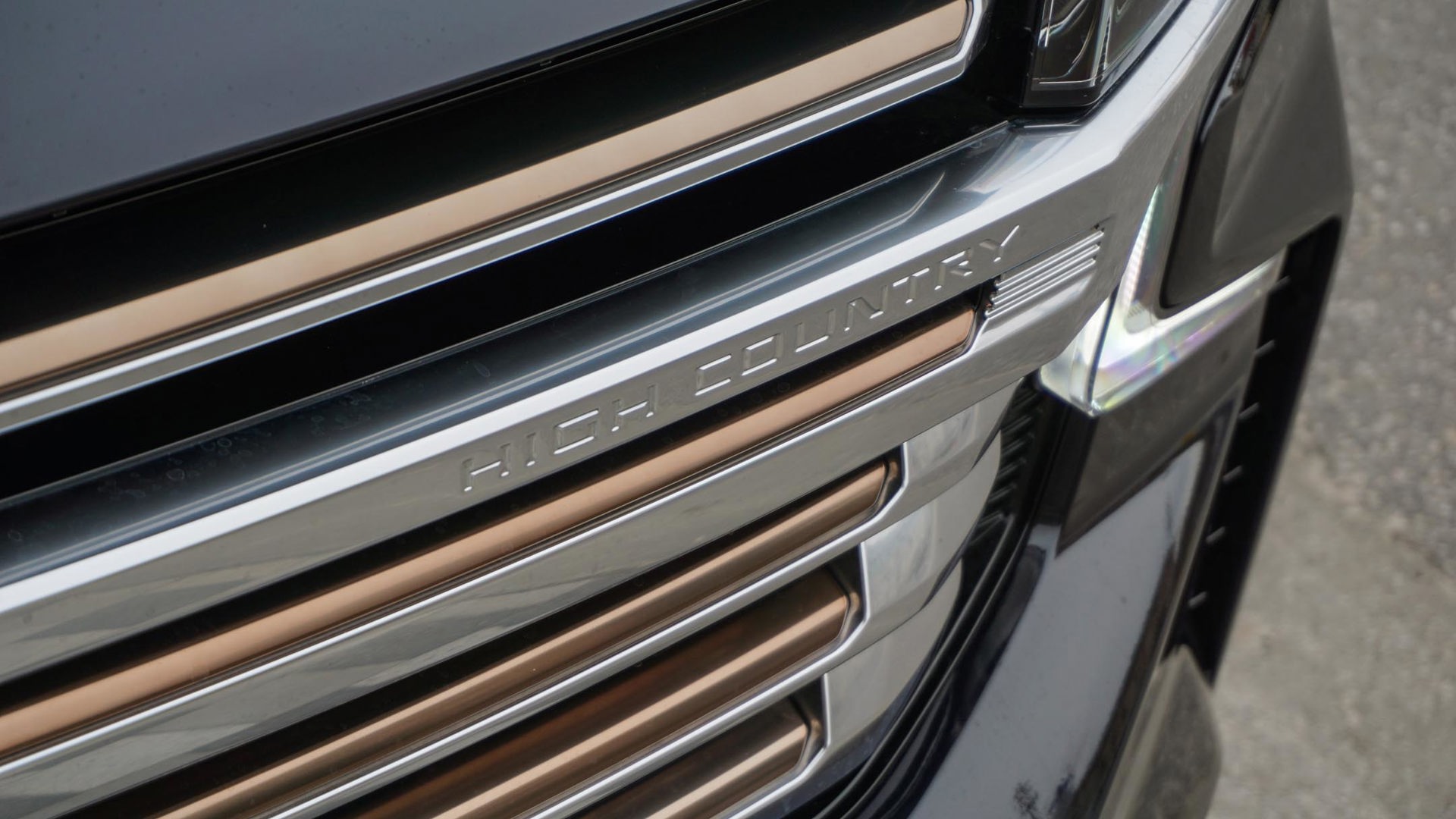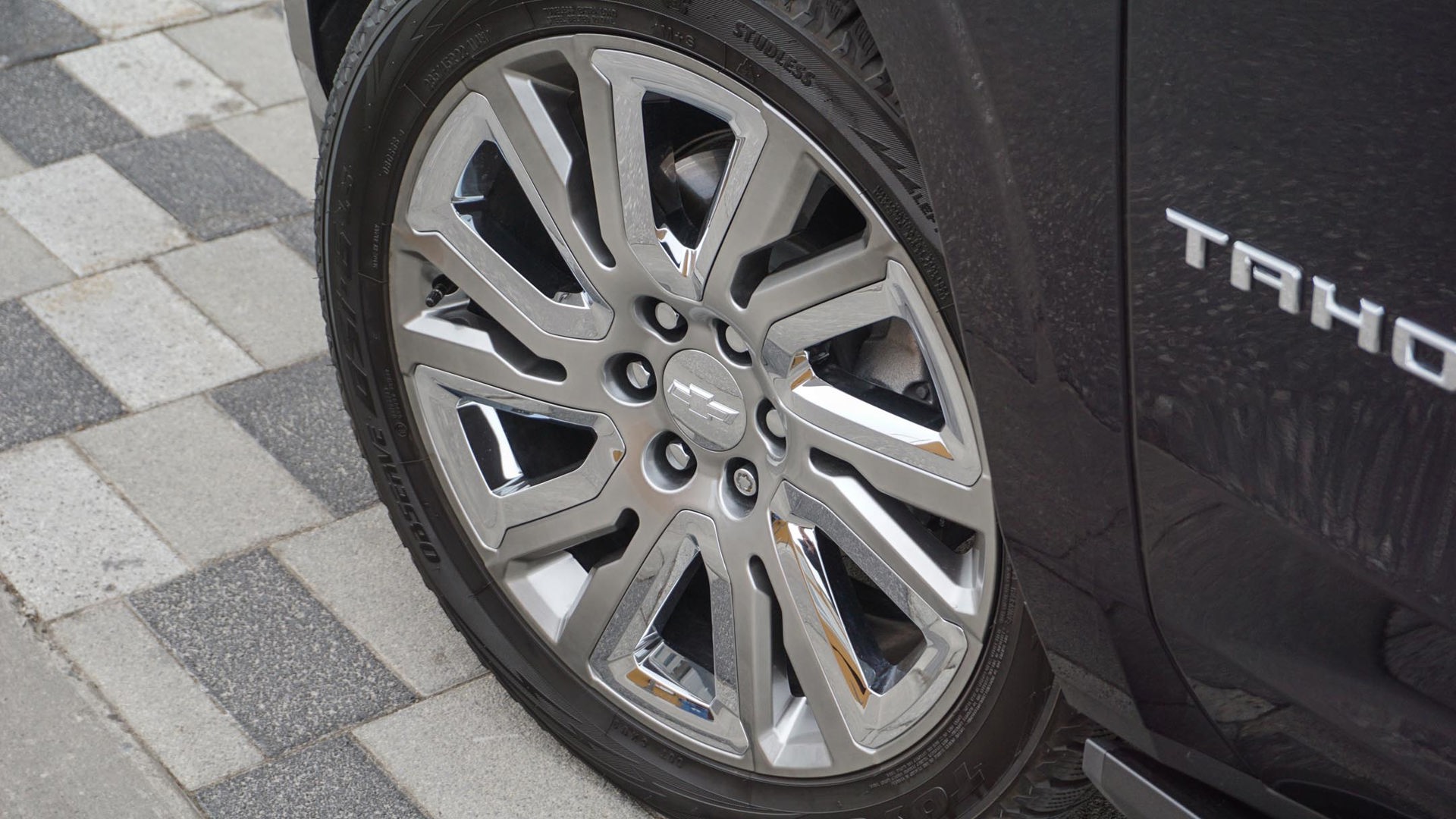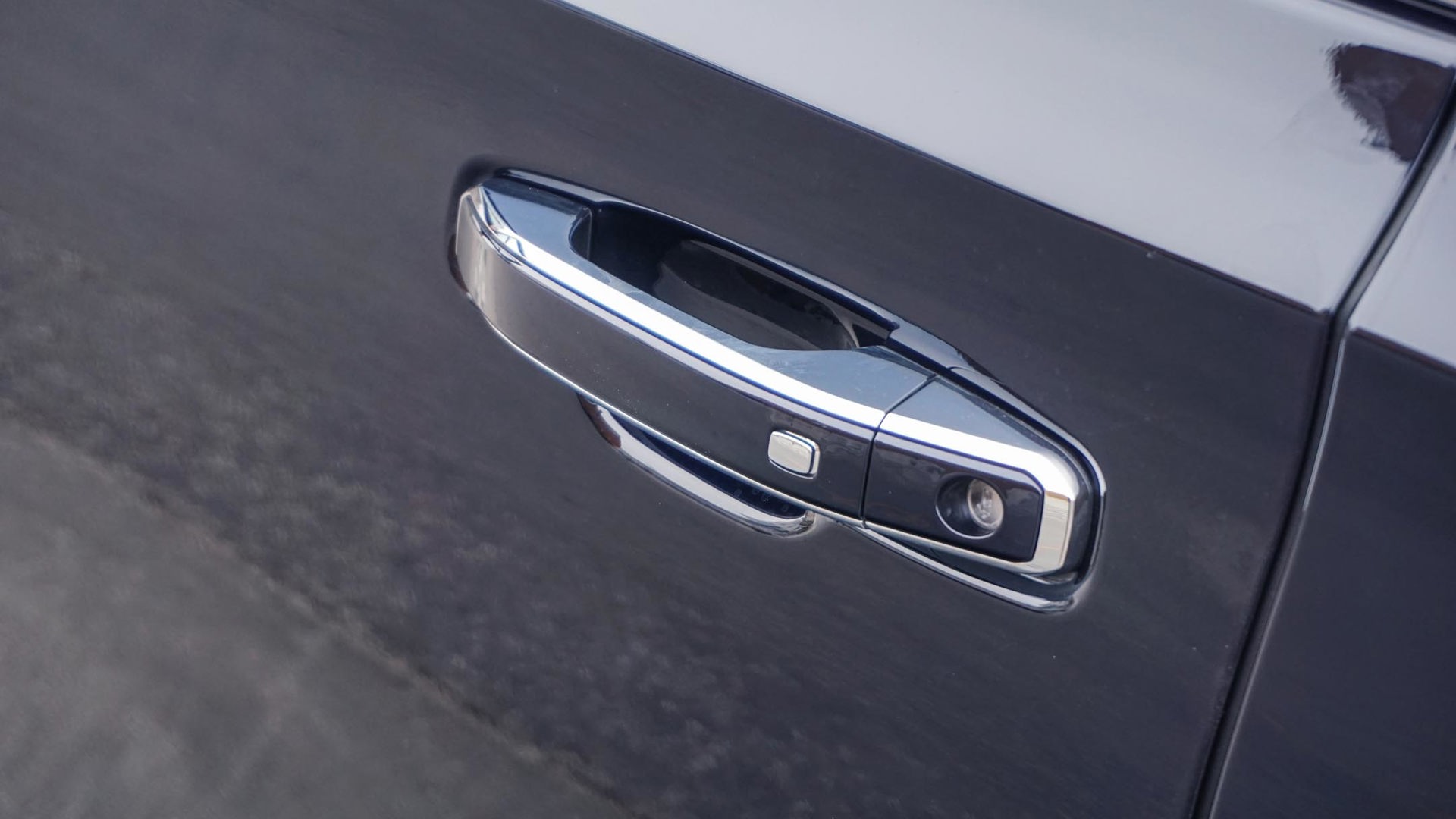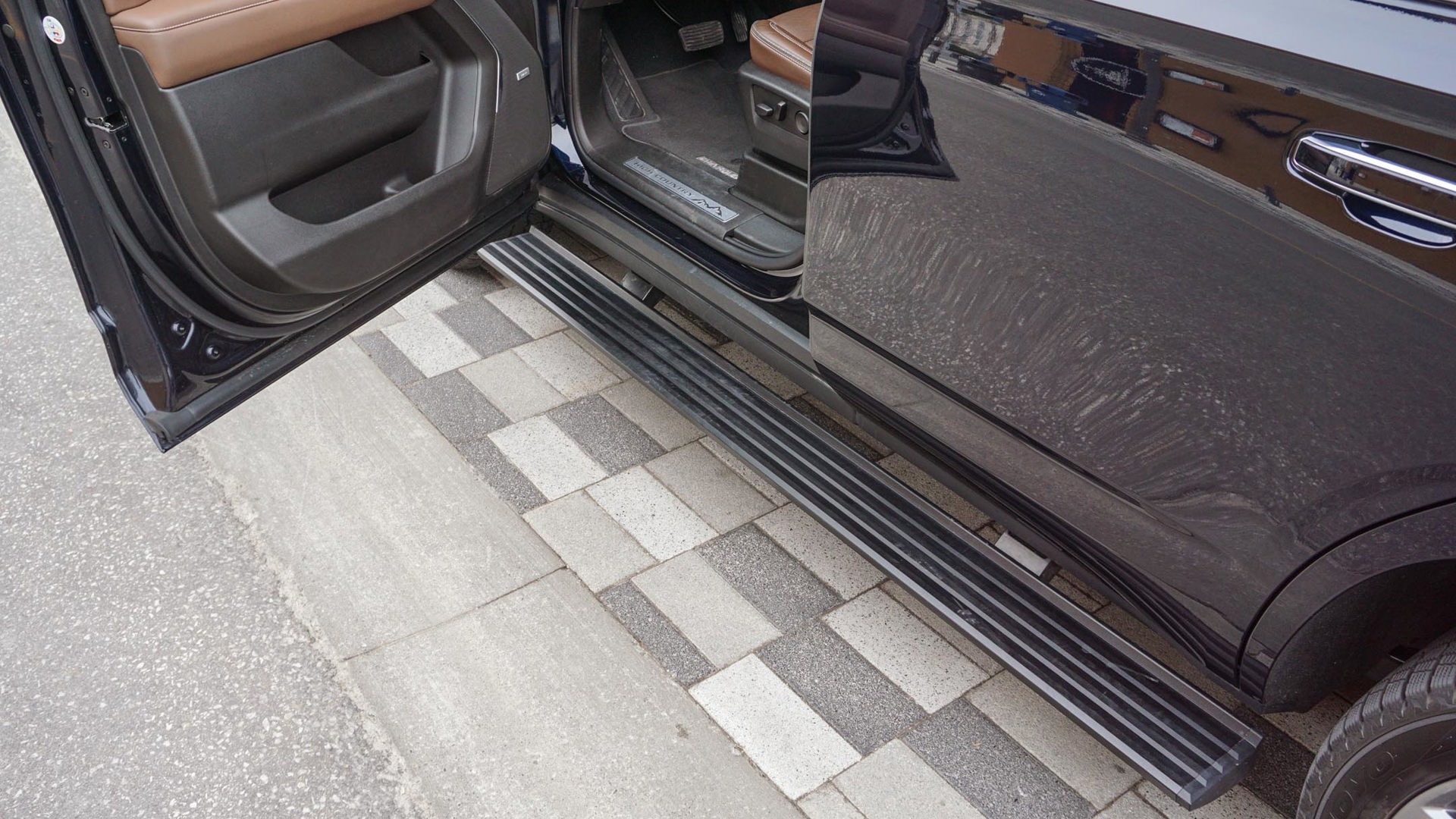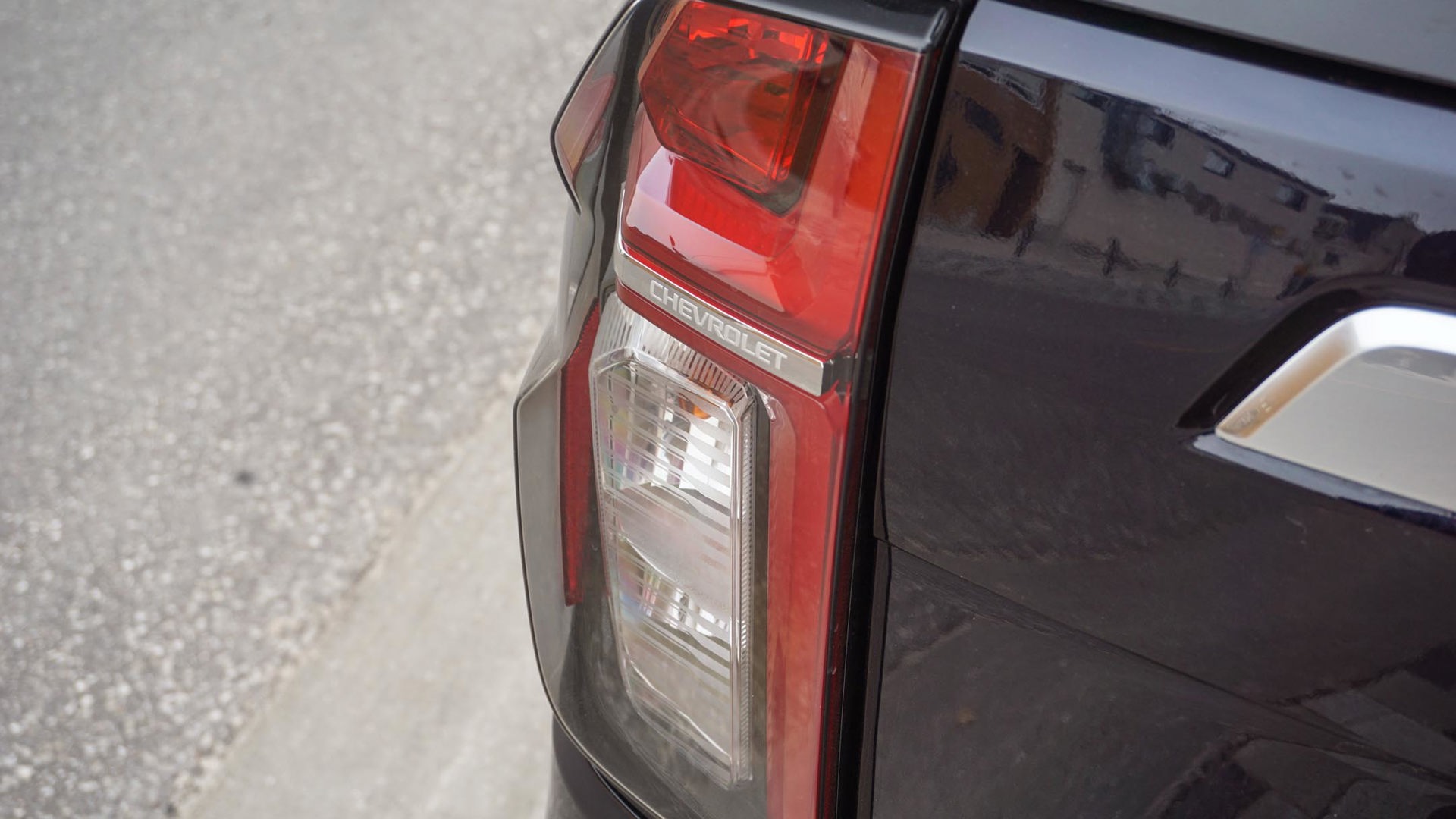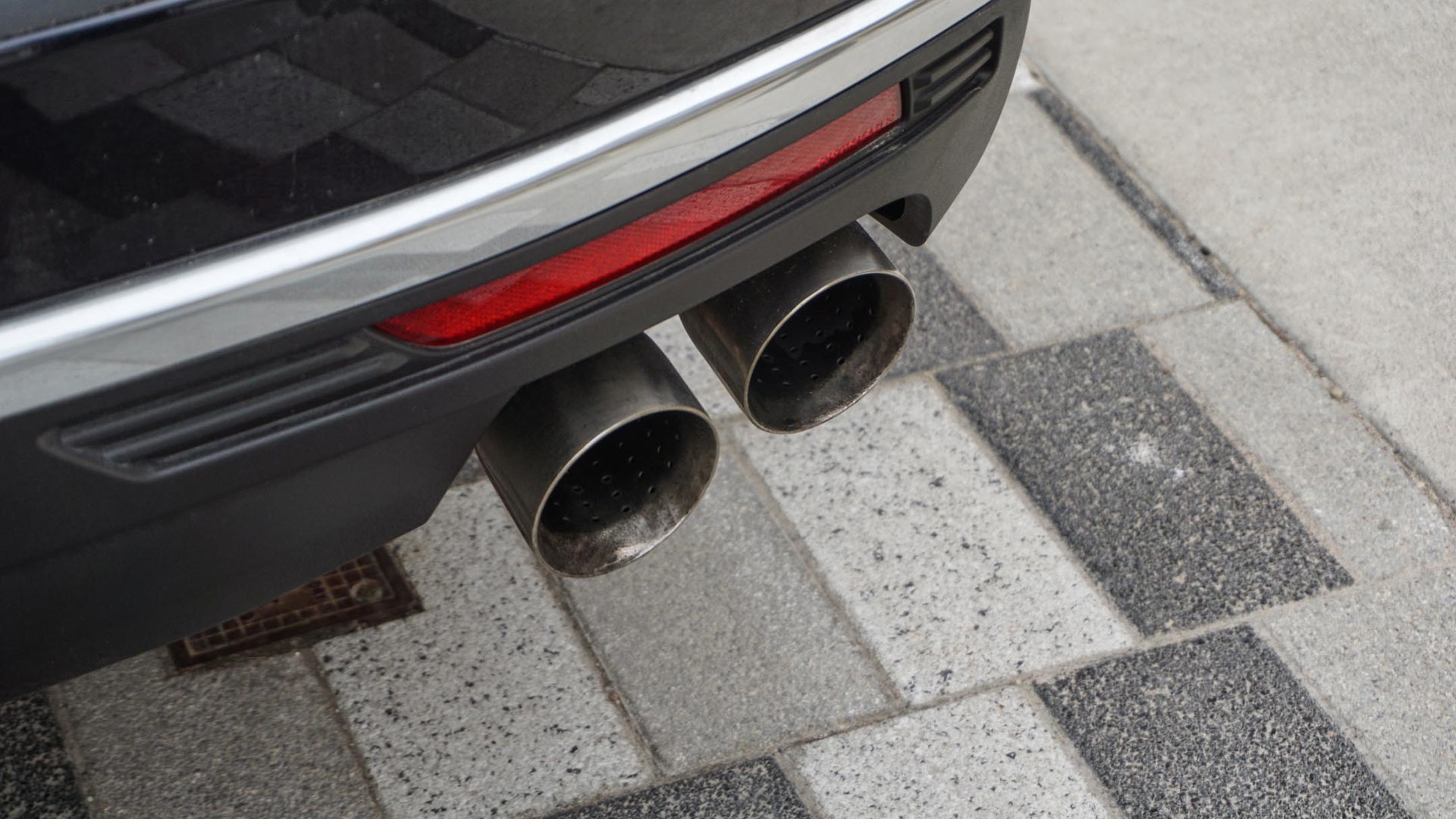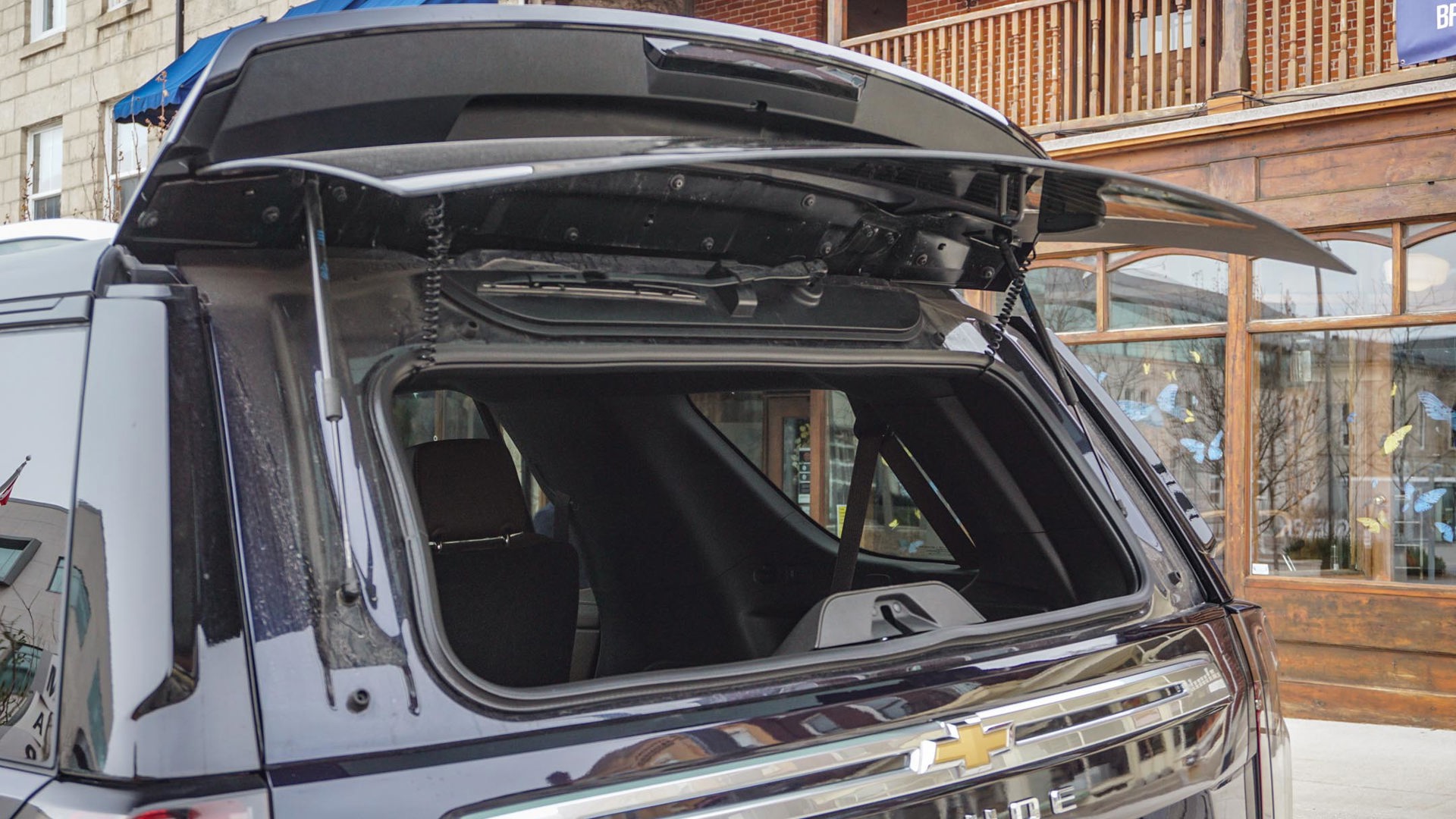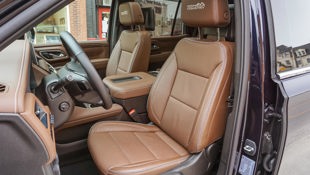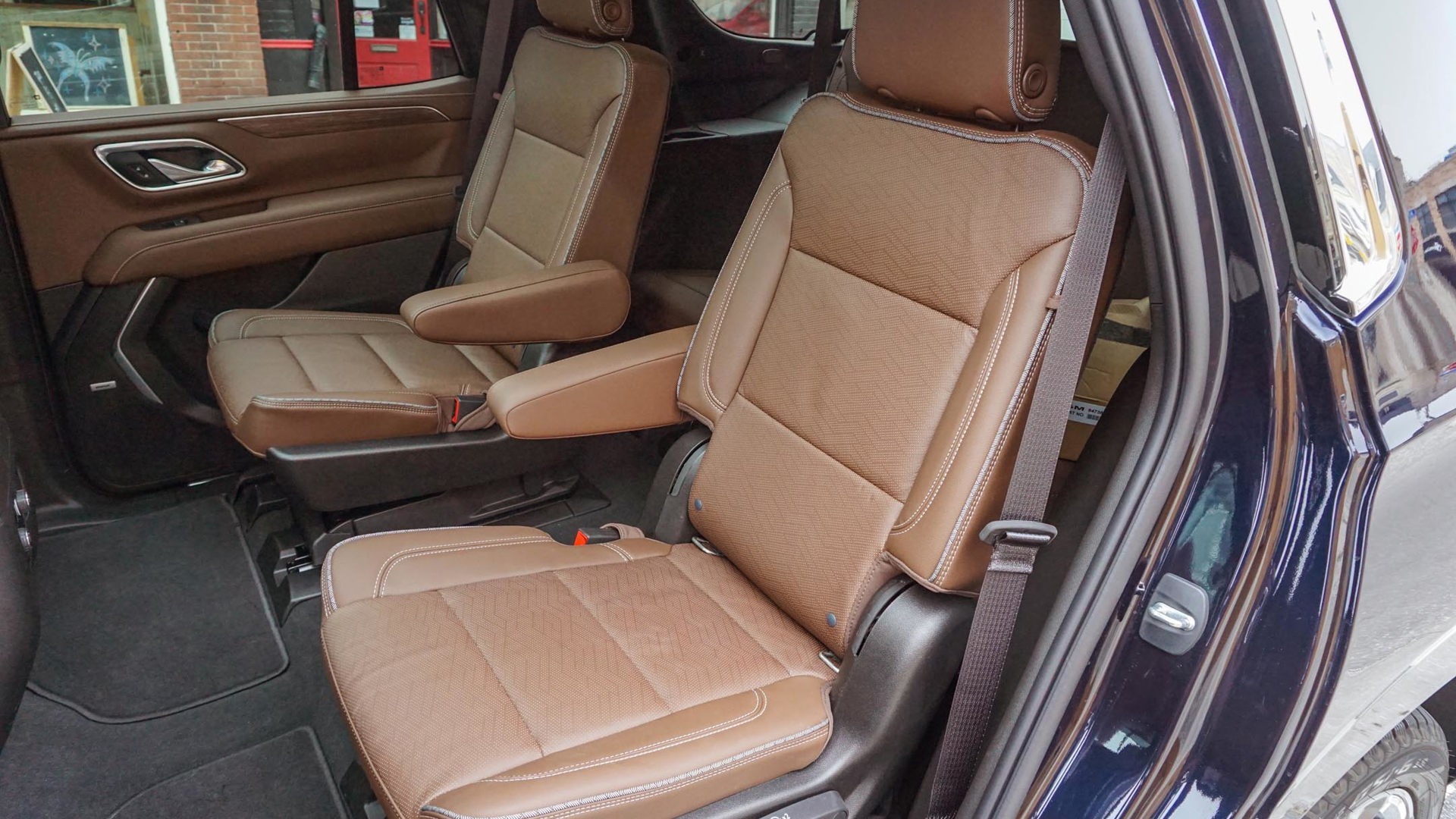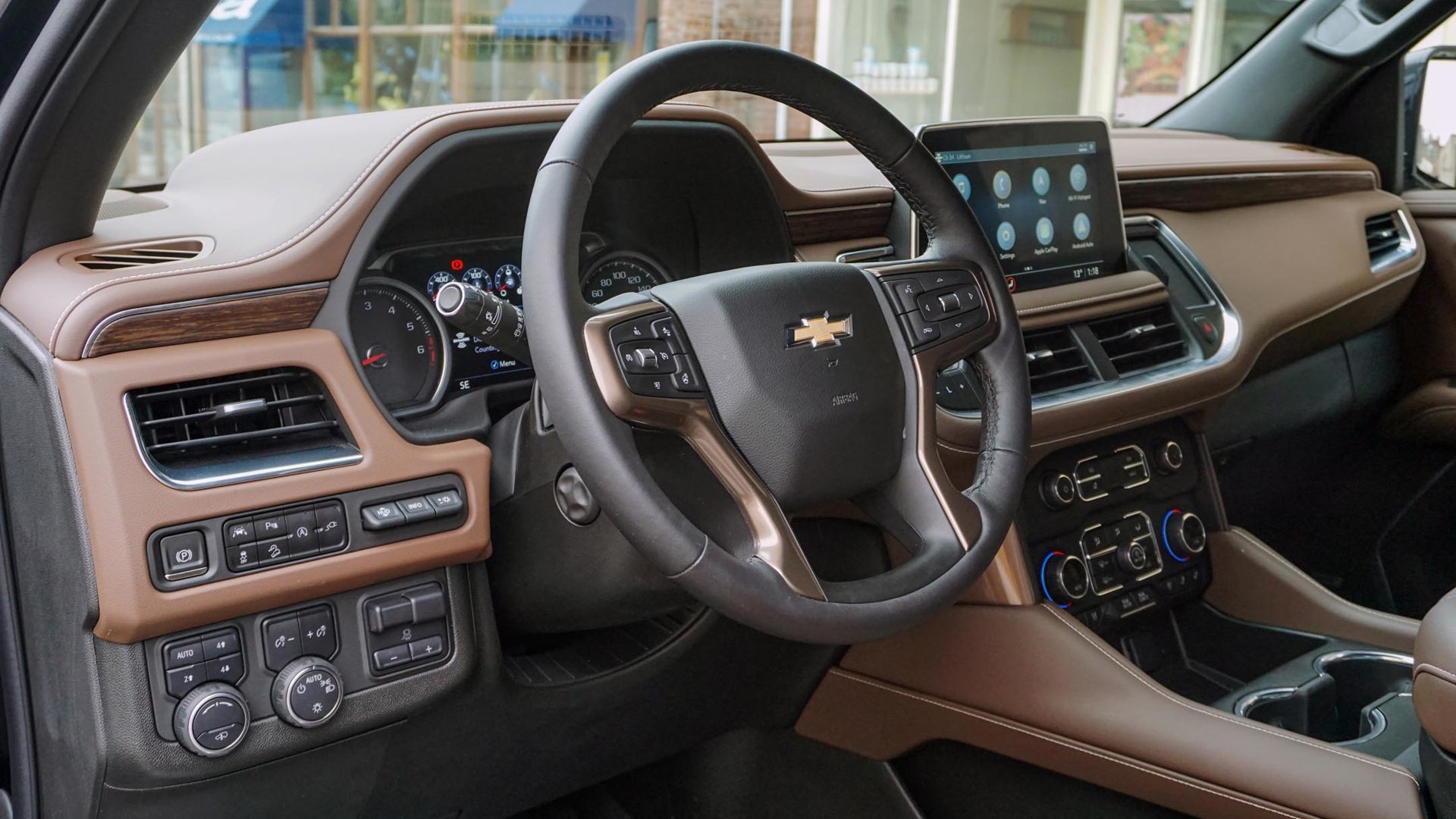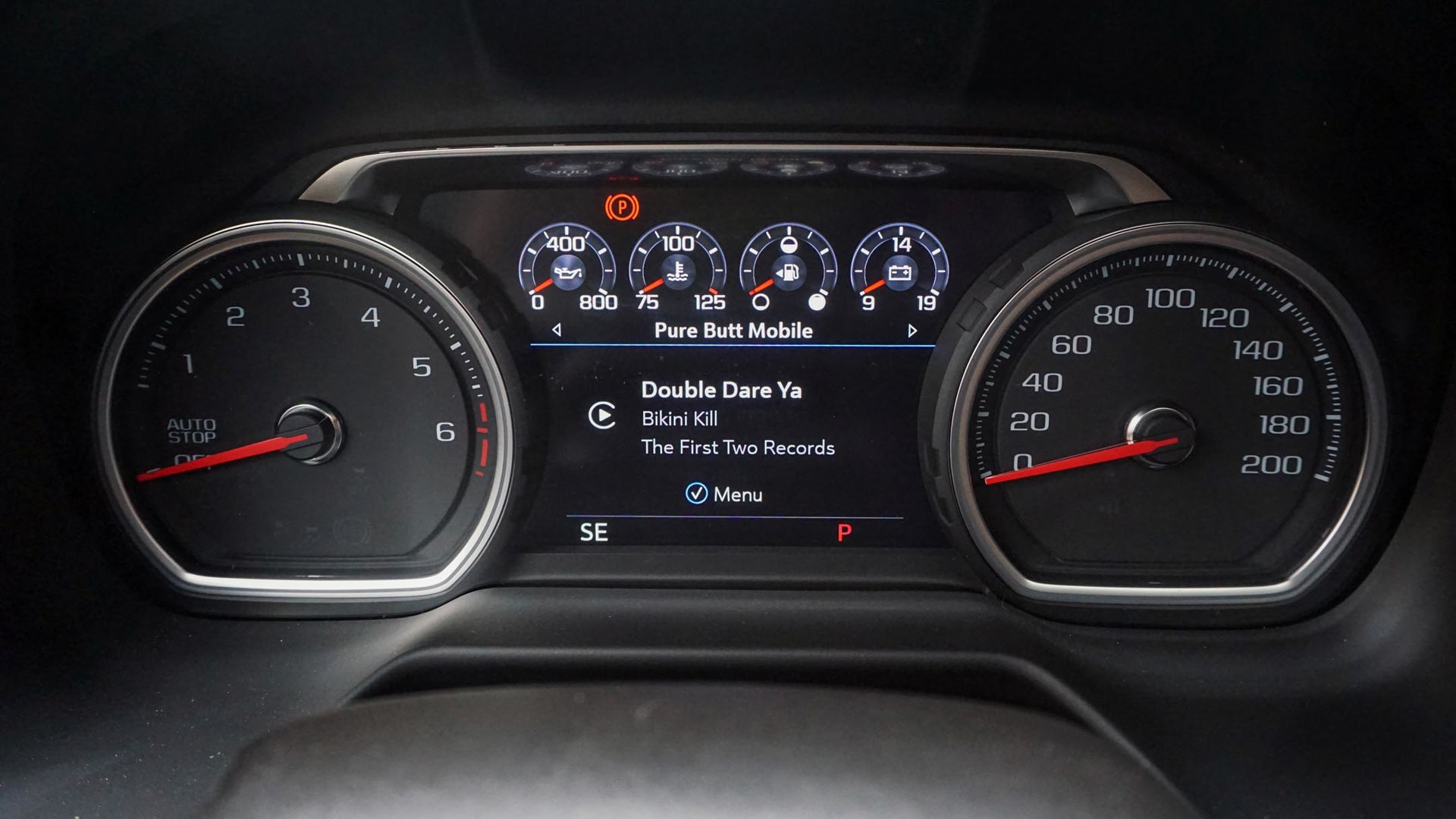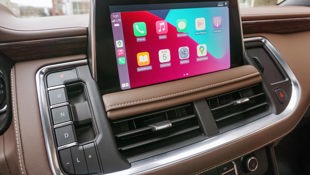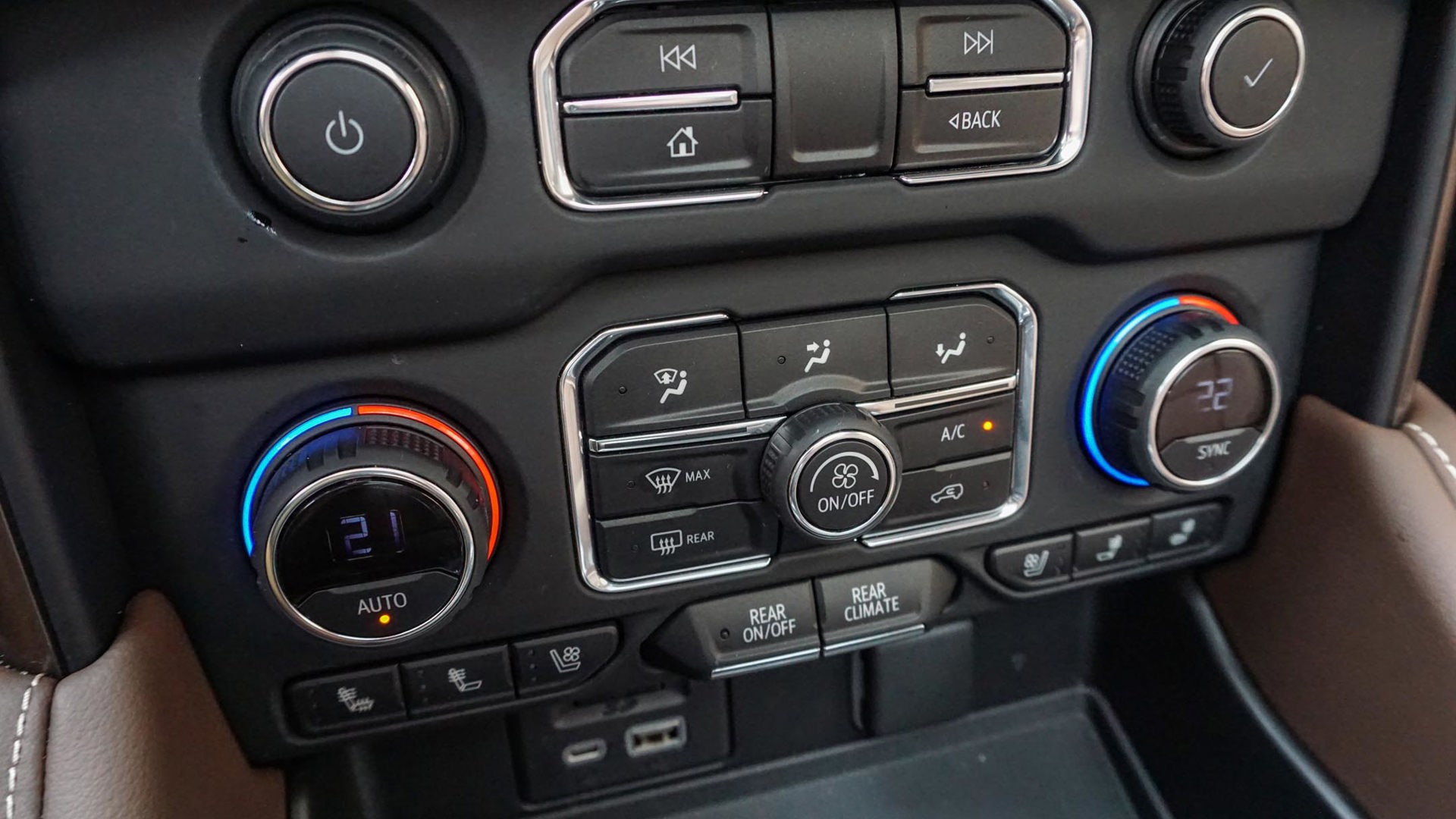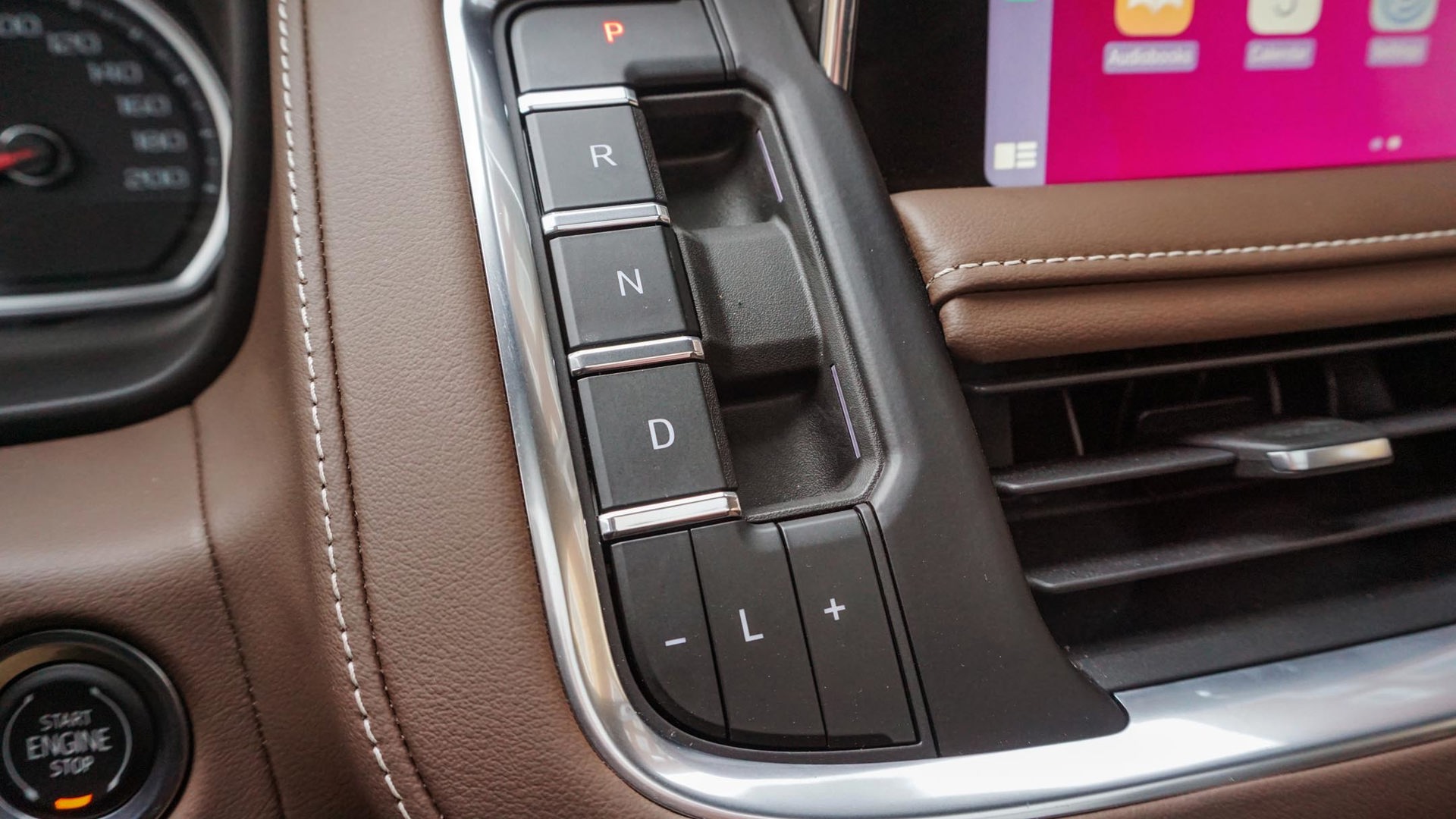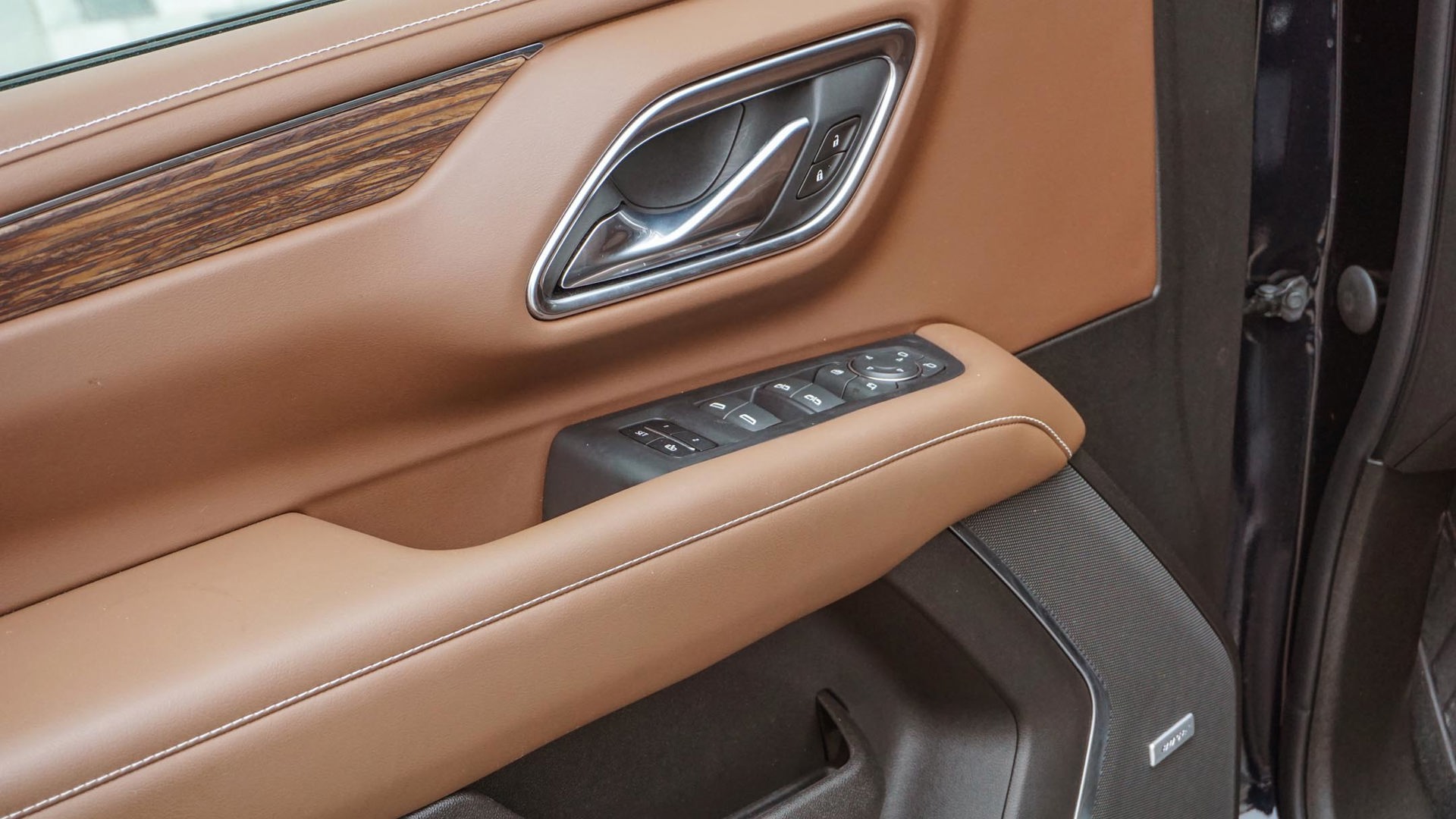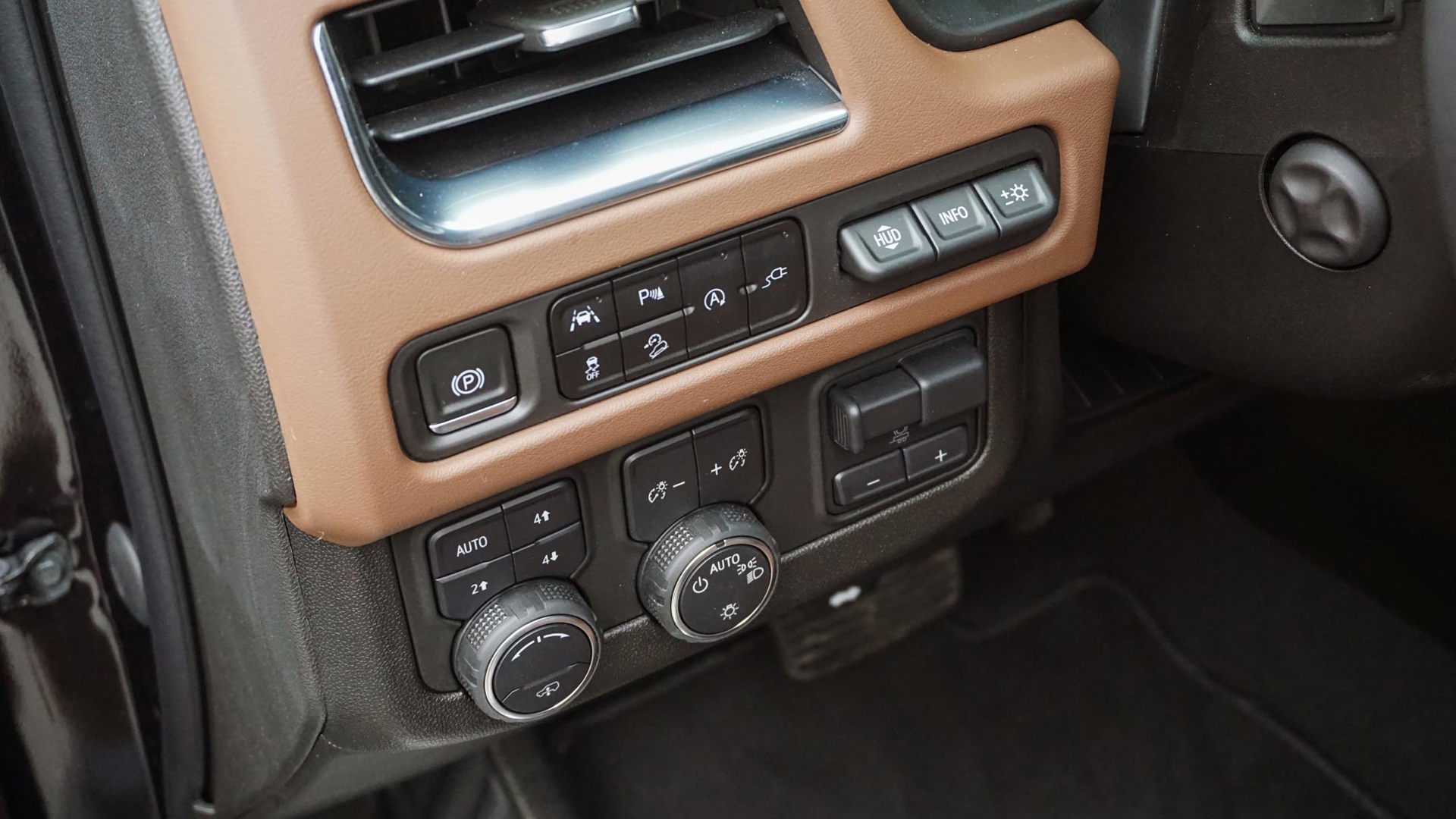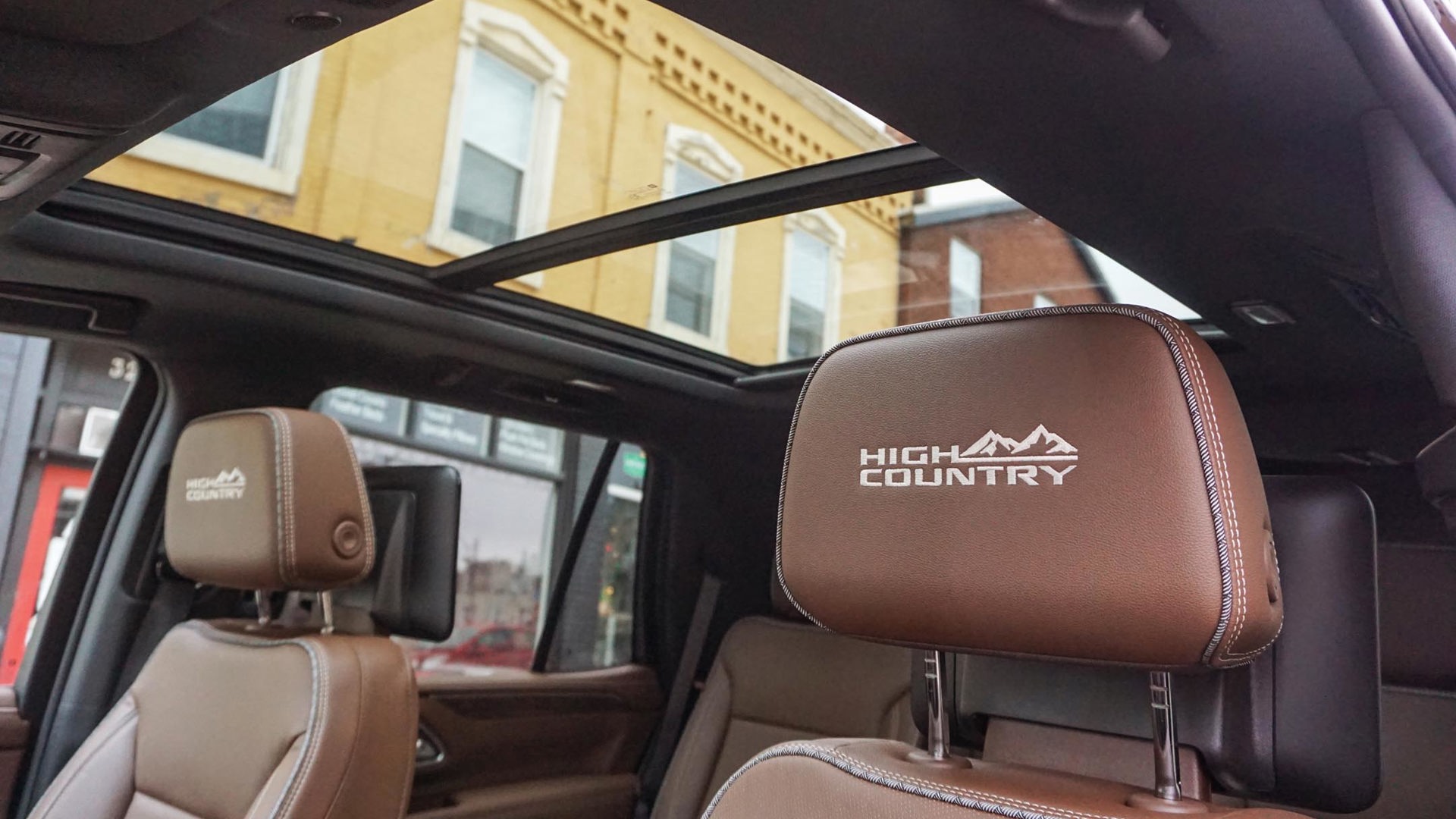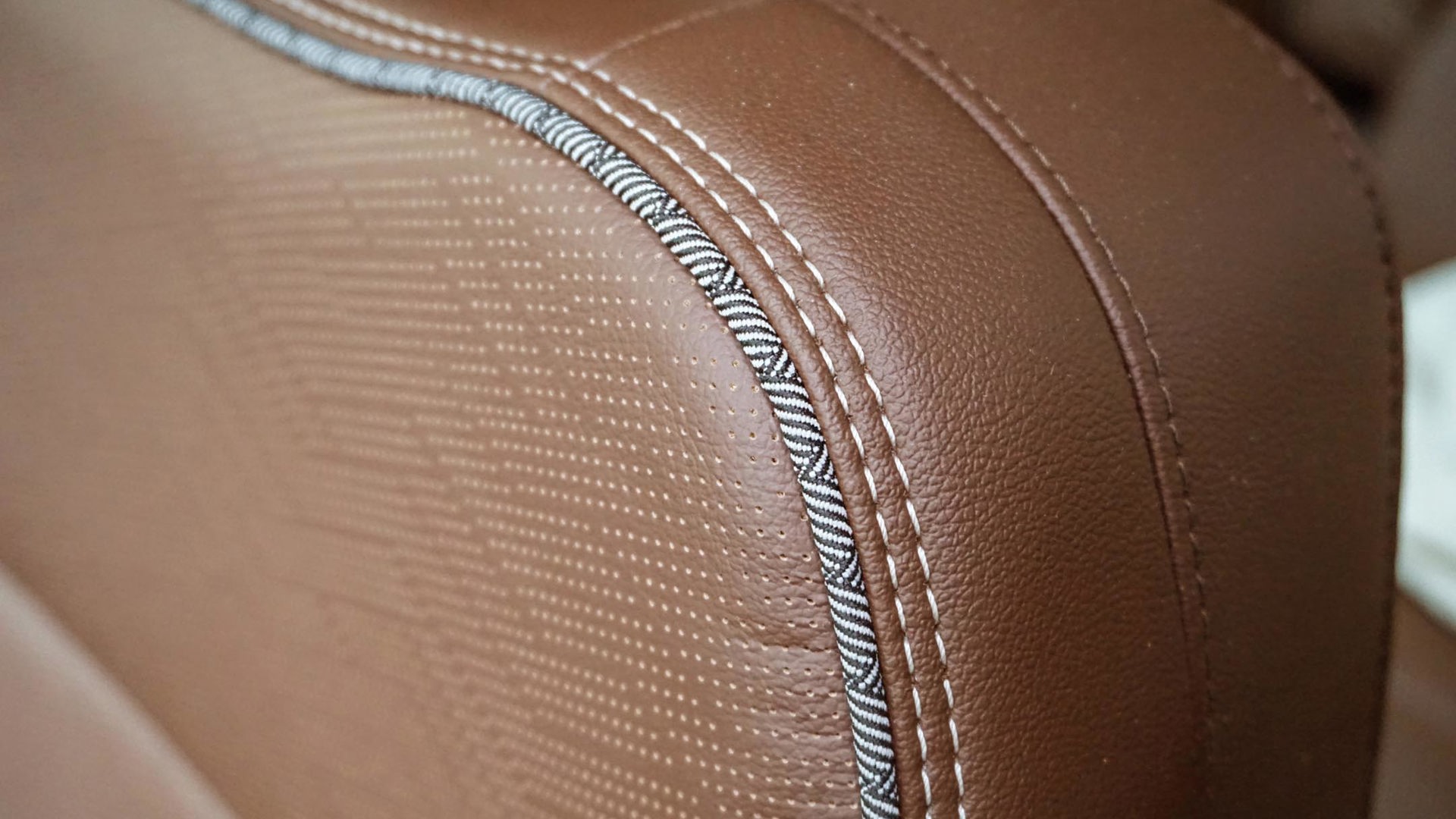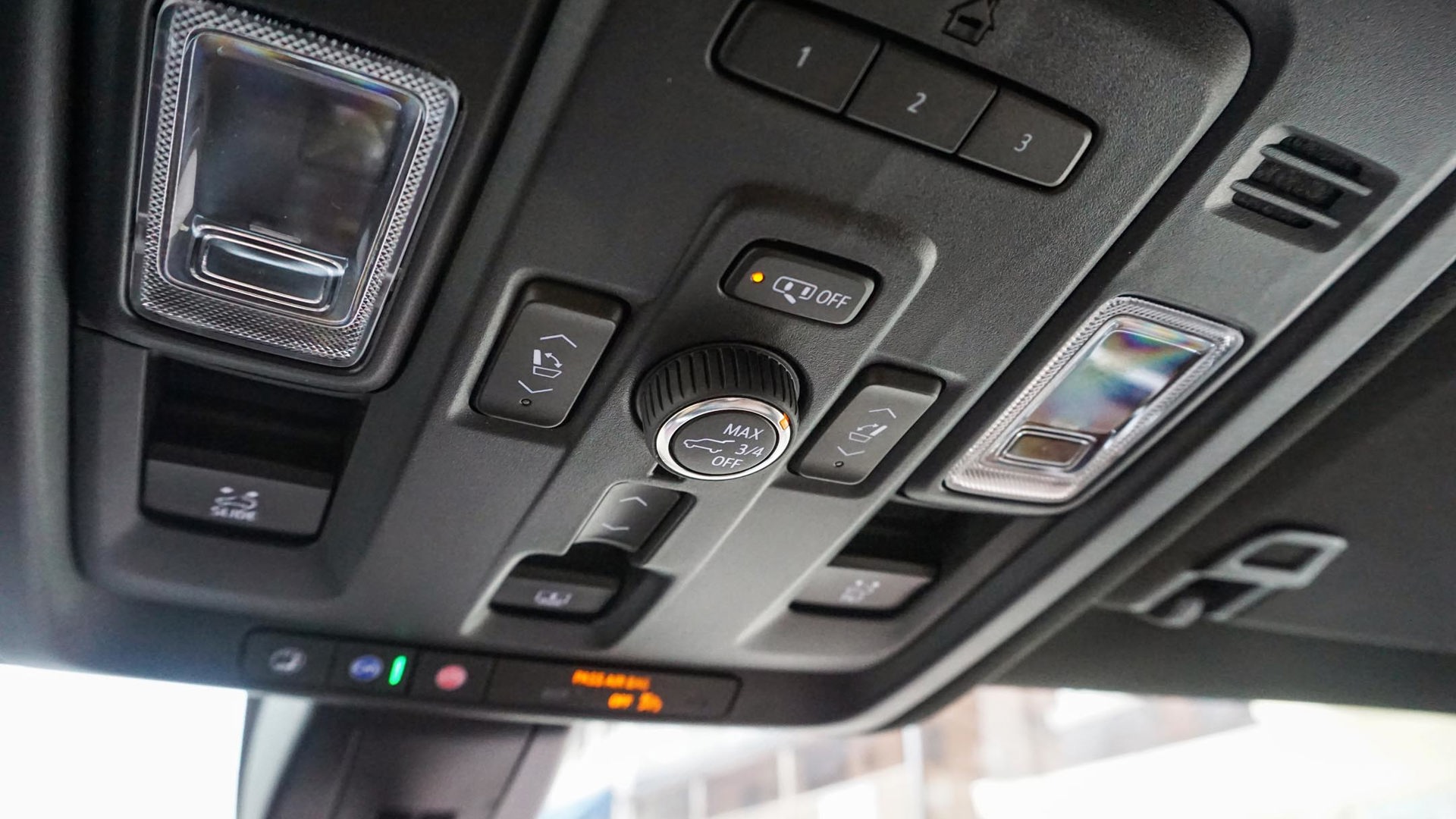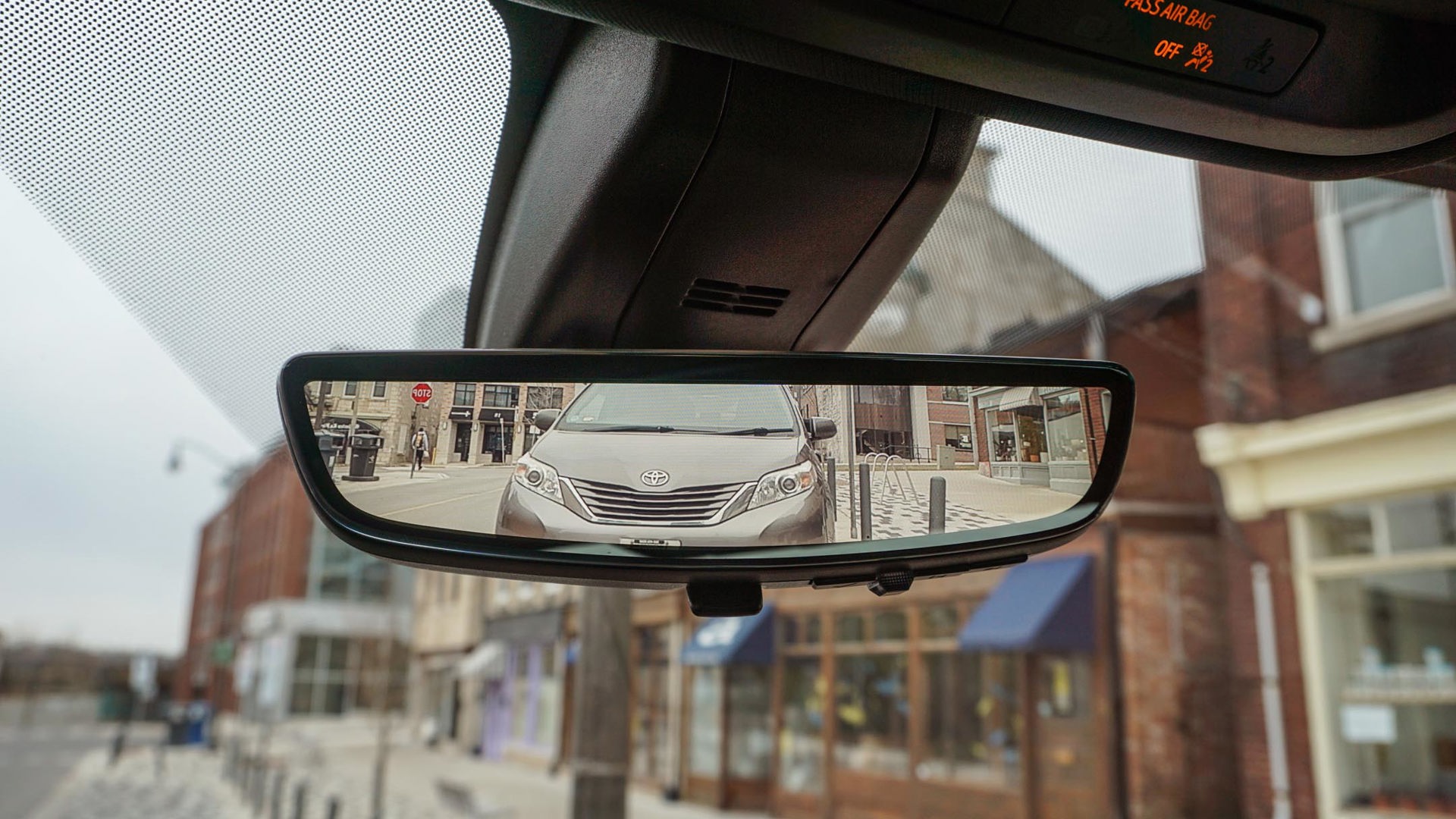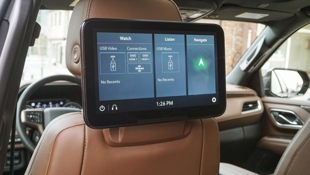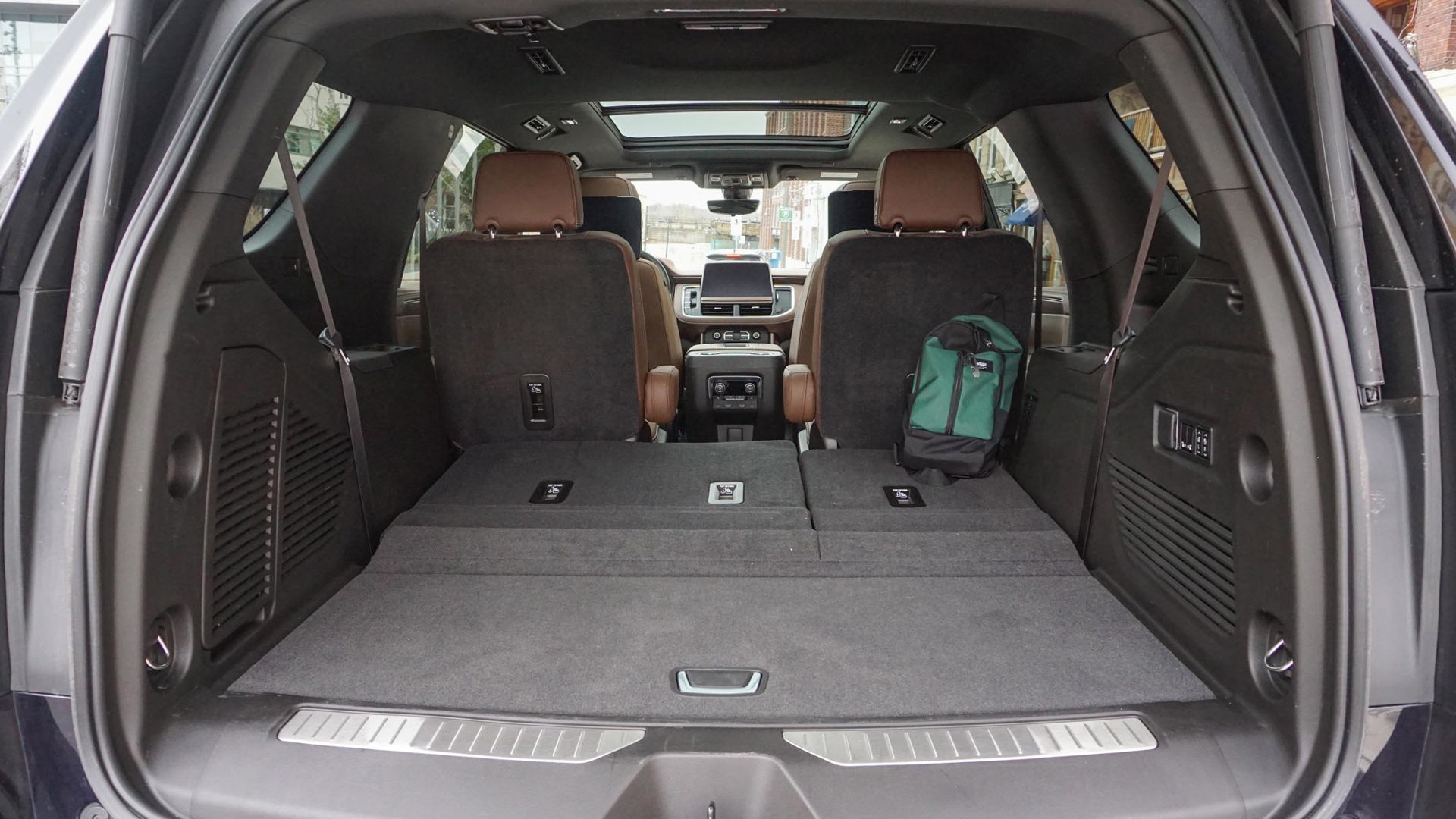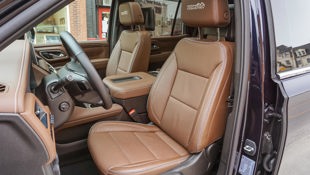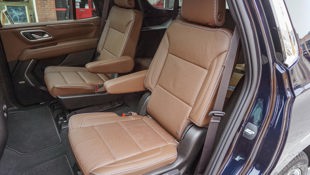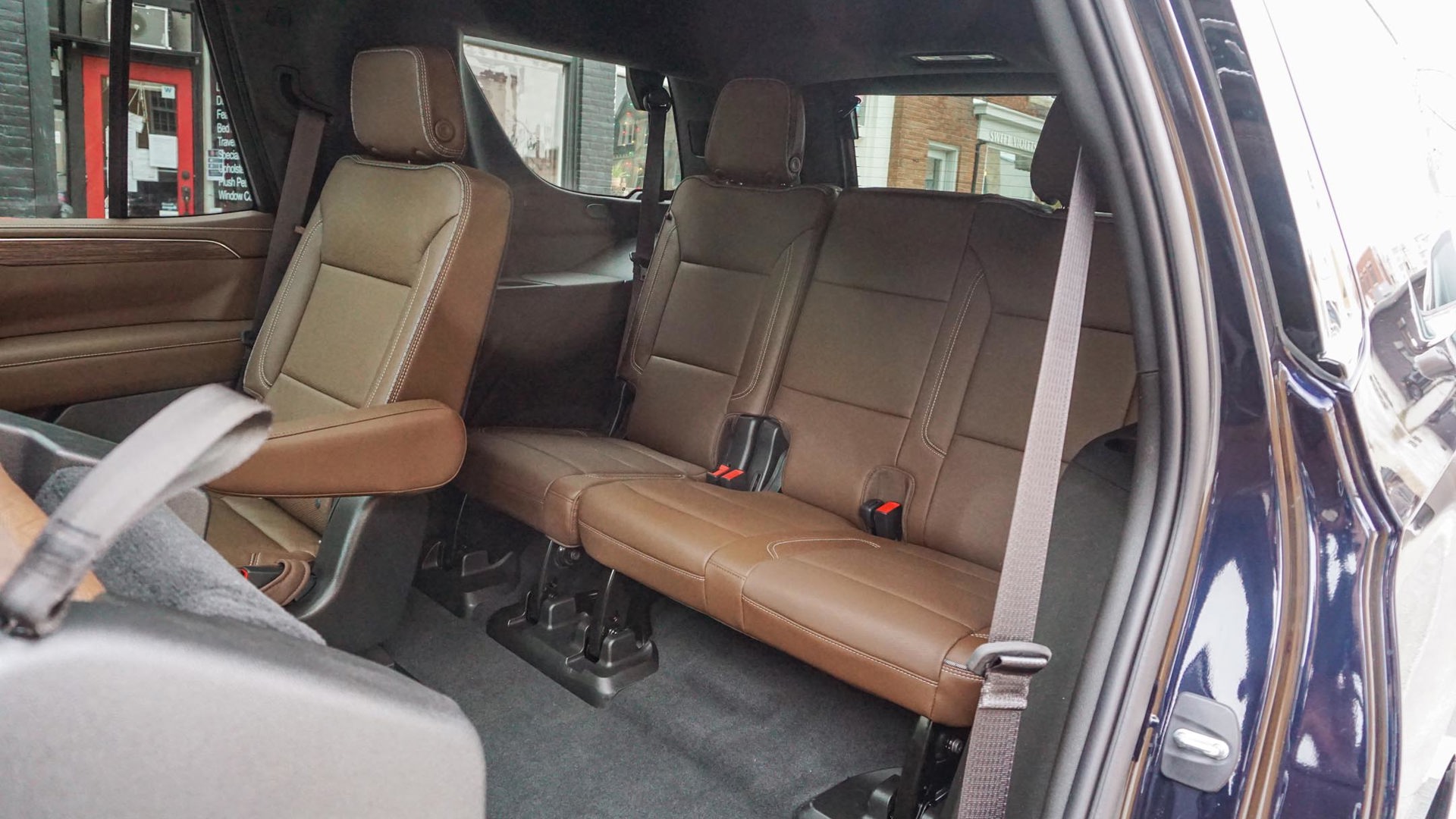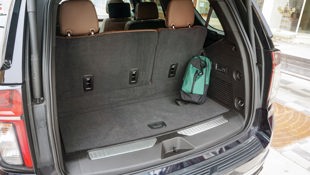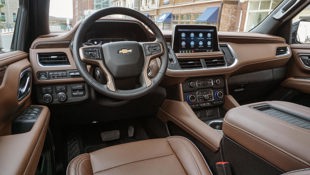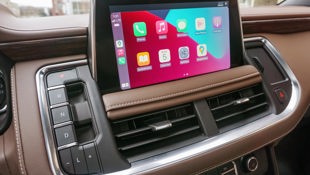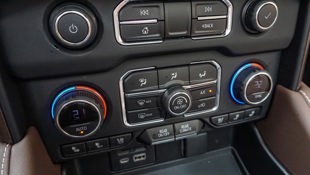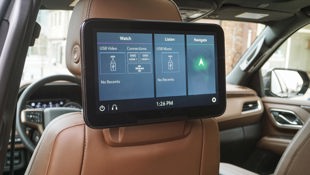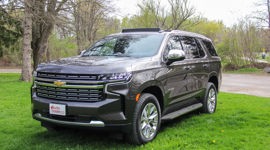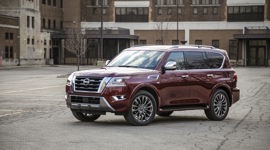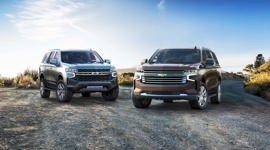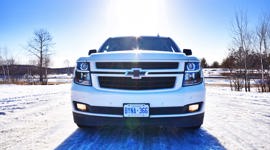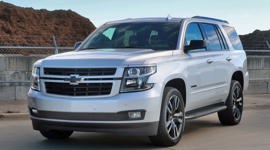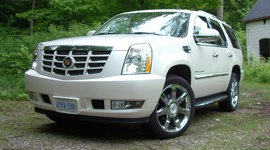 AutoTrader SCORE
AutoTrader SCORE
-
STYLING9/10
-
Safety8/10
-
PRACTICALITY9/10
-
USER-FRIENDLINESS8/10
-
FEATURES7/10
-
POWER10/10
-
COMFORT9/10
-
DRIVING FEEL9/10
-
FUEL ECONOMY5/10
-
VALUE6/10
Far be it for me to judge what you decide to park in your driveway.
It is, however, my job in the most literal sense possible to provide unbiased advice and insights that I hope you’ll consider prior to purchasing your next vehicle. It’s precisely why I would caution anyone wondering whether Chevrolet’s larger-than-life Suburban is for them or not that it probably isn’t. And while the 2021 Chevrolet Tahoe is sizeable in its own right, this comparatively stubby sport utility is far more easily managed around town while packing a ton of extra usable space inside.
Practicality: 9/10
I want to make sure I don’t mislead anyone here, so it’s important to note right off the top that this is still quite the imposing piece of machinery. Stretching 5,352 mm (210.7 in) from bumper to bumper – and, perhaps more importantly, 2,057 mm (81 in) wide – the Tahoe’s truck-based bones can make manoeuvring along a narrow city street packed with parked cars something of a precarious situation. Yet compared to its larger sibling it’s far easier to operate while feeling for the first time like a viable alternative. That’s because the space inside has been optimized to perfection, with substantially more passenger and cargo room than its predecessor.
At 5,733 mm (225.7 in) long, the Suburban still dwarfs the Tahoe; but it’s what’s on the inside that counts, as the age-old cliché goes, and beyond boasting identical dimensions to the current Suburban in the first and second rows, the rearmost bench in this overhauled fifth-generation Tahoe offers virtually the same accommodations for people as the previous Suburban’s. Forget going by the numbers (which are impressive, by the way) – there’s enough room back there that my 6-foot-3 frame fits with ease while leaving enough space in the seats ahead for someone of similar stature.
Cargo room behind the third row is a shallow-but-boxy 722 L – a jump of nearly 300 L compared to the previous Tahoe – while stashing those seats provides 40 per cent more space than before for a total of 2,056 L. Finally, folding the second-row seats provides 3,480 L of volume, which is slightly more than the last generation of the larger Suburban in the same configuration.
Comfort: 9/10
The Tahoe’s interior growth spurt isn’t simply a result of a size increase compared to its predecessor – though it is 173 mm (6.8 in) longer than before, while the wheelbase has been stretched 125 mm (4.9 in). Much more crucially, this full-size sport utility now utilizes an independent rear suspension setup rather than a solid axle like the Silverado pickup it was born of, which is much more compact while also delivering more driving comfort.
Aiding in the quest of the latter are this top-of-the-line High Country trim’s magnetorheological dampers and optional air suspension at all four corners that combine to make this more comfortable and composed than most proper premium SUVs. While there’s still a hint of the longitudinal rigidity common to body-on-frame vehicles like this, and the unsprung weight of this tester’s massive 22-inch wheels pulses through the steering rack over big bumps and broken pavement, this is about as good as it gets for the money – and it better be.
Value: 6/10
Chevrolet Canada has kept it simple when it comes to the way these fraternal twins are priced, though neither is especially cheap. No matter the trim, just $3,000 separates these two, with the smaller Tahoe (obviously) ringing in for less. The bare-bones base trim in a rear-wheel-drive configuration comes in at $63,848 including a $1,900 freight fee but before tax, while the top High Country is an $83,348 proposition.
That’s right in line with the rival Expedition from Ford, though the Tahoe isn’t quite as well equipped for the asking price – particularly at the top of the lineup. Take the tester you see here: to get it with the kind of equipment that’s included in Expedition Platinum’s price tag (power-deployable running boards, a panoramic sunroof, and adaptive cruise control, to name a few) requires expensive add-ons that see the bill balloon to $96,658. No matter the ride quality, it’s tough to make amends with the roughly $8,000 price premium over that Expedition with the same extras found here like the tow package and rear-seat entertainment system.
Features: 7/10
Even forgoing the unnecessary wheels seen on this tester – a head-scratching upgrade that sees the standard 22-inch alloys swapped with ones featuring plastic chrome inserts at a cost of $4,165 – makes this Tahoe High Country almost $4,000 more while still leaving it absent a crucial comfort feature: massaging front seats. At the risk of coming across as some kind of crass Millennial, I’d have some serious FOMO knowing I paid more for my Tahoe and didn’t get something so desirable for the money.
Also missing at the top of the lineup here that’s included in every Expedition but the cheapest one is adaptive cruise control; to get that, you must slide over to the options list. Worse still, adaptive cruise can only be added to the top two Tahoe trims. That’s a feature that comes standard in the cheapest Toyota Corolla on the market, making its omission a glaring one.
Rest assured, there’s good stuff to be had here, and some of it comes in the base LS trim. A 10.2-inch touchscreen infotainment system, wireless Apple CarPlay and Android Auto connections, a built-in (subscription-based) Wi-Fi hotspot, tri-zone automatic climate control, and satellite radio count as standard, though the cheapest trim skips heated seats (another bizarre omission given they’re included in the cheapest Kia Rio, as is a heated steering wheel).
Safety: 8/10
The product planners at Chevy have followed a similarly strange strategy when it comes to advanced safety features, with only forward collision warning with pedestrian detection and auto braking included in every Tahoe trim. To get lane-departure warning and lane-keeping assist or blind-spot monitoring, expect to once again peruse the options sheet or opt for an expensive trim like this High Country or the Premier directly beneath it in the lineup. Sweetening the pot, this top trim also includes extras like a head-up display and a digital rearview mirror that displays a live video feed of what’s happening behind you should occupants or cargo obstruct the back window.
As far as the basics go, there are seven airbags throughout the cabin (six, should you choose a front bench seat), and a government-mandated back-up camera that’s of outstanding high-def quality. There’s also the built-in OnStar connected services suite that’s been a General Motors (GM) calling card for years. While it requires a subscription, it includes automatic emergency notifications in the event of a collision. And while it isn’t standard, adding one of the available tow packages brings with it blind-spot monitoring that extends the length of any trailer being pulled behind the Tahoe.
User Friendliness: 8/10
Big and brooding SUVs like this have inherent benefits like large windows for good outward visibility built right in, but it’s not all good news in that regard here. For instance, the A-pillars that frame the windshield are rather chunky, creating blind spots that could easily hide a pedestrian in a crosswalk. The same is true of the rearward view, with wide pillars around the sides and back that make the available blind-spot monitoring system all but necessary.
But command and control from the behind the wheel is second to none, with the same sensation provided by a pickup truck present here. Switchgear is laid out in a logical manner, with clusters of controls that make an awful lot of sense. By the driver’s left knee lives the trailer brake controller (if so equipped) alongside buttons for the four-wheel drive system – again, not standard, but included in most of the lineup – and a dial for drive mode selection that doubles for height adjustment duty should air suspension be added.
The centre of the dash is adorned by that touchscreen display that’s responsive and runs an intuitive interface, while controls beneath it for HVAC and audio look a little cheap and childish but get the job done. It’s only the triggers and buttons for gear selection located next to the infotainment screen that stray from the simplicity of the space, feeling far less intuitive than a column or console shifter – or even a rotary dial.
Styling: 9/10
Aside from the juvenile-looking controls, the cabin is easily classed up a notch by the brown leather that’s available in this High Country trim (the Premier, meanwhile, is offered with tan cowhide that provides a nice splash of something different). It’s only the fake wood trim that seems somewhat disingenuous in a near-six-figure sport utility. Outside, this broadsided behemoth looks as luxurious as you’d expect it to in its priciest duds, with chrome and bronze accents playing off the good-from-afar-but-far-from-good upgraded wheels to give it some serious presence. Finished in beautiful Midnight Blue Metallic paint, I’d even be willing to look past the gargantuan grille and awkward U-shaped running lights for all the good that’s been delivered here.
Power: 10/10
V8 power has long been a staple of GM’s full-size SUV offerings and that trend continues here, though it wouldn’t be my choice under the hood of this Tahoe. While there’s nothing inherently wrong with either the 5.3L or 6.2L eight-cylinders offered – the latter is exclusive to the top trim – it’s the optional 3.0L diesel I would opt for, and it’s the one I would recommend for its low-end torque and impressive efficiency. It’s also a no-charge option for this High Country, making its case even more appealing. (At just $2,000 elsewhere in the lineup, it’s still worth every penny.)
This 6.2L is smooth, though, with a linear torque supply on its way to the 460 lb-ft peak at 4,100 rpm. Joining that stuff that makes the Tahoe go is an impressive 420 hp, and together they feel like they could move a mountain with little more than a gentle press of the throttle pedal. OK, maybe that’s a stretch, but with 3,629 kg (8,000 lb) of towing capacity it can pull all manner of trailers with ease.
Driving Feel: 9/10
Rolling onto the throttle with generous force is enough for the Tahoe to surge ahead with vigour, a deep roar bellowing from beneath the hood and out of the exhaust to remind you what this engine is capable of. At some 2,515 kg (5,544 lb), this thing won’t win you any drag races, but it builds speed smoothly as the 10-speed automatic transmission swaps cogs effortlessly.
All that curb weight is felt when the brakes are applied and yet the progressive pedal means there’s no nasty surprises as they steadily bring this beast to a halt. Similarly, there’s some listing and rolling when cornering that you’d expect from an SUV of this size, but it’s mild-mannered and well managed thanks to all the fancy suspension stuff.
Fuel Economy: 5/10
This big engine’s only weakness is its appetite for premium-grade gas, with official ratings of 16.8 L/100 km around town, 12.4 on the highway, and 14.8 combined. The final tally after a week of testing rang in at 14.8 L/100 km over approximately 540 km total – bang on the official combined average.
The Verdict
Make no mistake – much like its larger sibling, the 2021 Chevrolet Tahoe is a formidable family hauler that isn’t for the faint of heart (or wallet). But for the first time since it was introduced back in the mid-’90s it’s a genuine substitute for those who don’t want or need all the space the Suburban provides. And it doesn’t feel like a compromise, either.
Think of this as the urban Suburban, then – the city-sized version. Obviously, it’s still a big vehicle; but you don’t have to leave the nose sticking out into the aisle at the grocery store or circle the block looking for a place to parallel park. It’ll even fit in your average parking spot, or maybe even a single-car garage if you so choose.
The only question that remains is whether it’s worth the price of admission, and that’s for you to decide. But before you do, make sure to drive it back-to-back with the Ford Expedition, which offers some extras you can’t get here, including massaging seats, for a little less money. The same goes with the Suburban if your allegiance is to the bowtie brand, but sometimes less is more, and you just might like what you’ll find here.
| Engine Displacement | 6.2L |
|---|---|
| Engine Cylinders | V8 |
| Peak Horsepower | 420 hp @ 5,600 rpm |
| Peak Torque | 460 lb-ft @ 4,100 rpm |
| Fuel Economy | 16.8 / 12.4 / 14.6 L/100 km cty/hwy/cmb |
| Cargo Space | 722 / 2,056 / 3,480 L behind 3rd/2nd/1st row |
| Model Tested | 2021 Chevrolet Tahoe High Country |
| Base Price | $81,448 |
| A/C Tax | $100 |
| Destination Fee | $1,950 |
| Price as Tested | $96,658 |
|
Optional Equipment
$13,160 – High Country Deluxe Package, $5,805; 22-inch Six-Spoke Midnight Silver Alloy Wheels, $4,165; Rear Seat Entertainment System, $2,295; Midnight Blue Metallic Paint, $495; Power-Sliding Centre Console, $400
|
|
